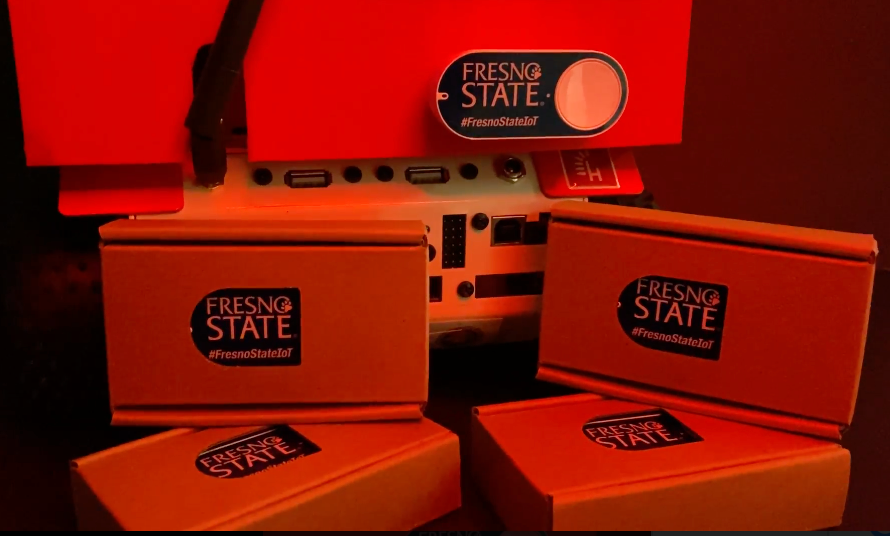Hub of Digital Transformation and Innovation
- Technology Services
- Hub of Digital Transformation and Innovation
- Digital Transformation
Amplifying Student Success by Advancing Technology and Accelerating Digital Transformation
Since 2019 DXI has explored technology innovation that supports digital scholarship and research in areas, such as artificial intelligence, augmented and extended reality, blockchain, internet of things, and robotics. We believe Digital Transformation begins with strategy, leadership, communication, and a Culture of Innovation all to support and enhance student success! These starting points empower students to use design thinking, ideation, and collaboration combined with innovative technologies to develop projects and initiatives with real-world applications. With a focus on team building and student success, DXI focuses on the human side of digital transformation first and then implements the latest technology in innovative solutions to fit the unique needs of our campus and community partners. DXI continues to explore the need to proactively adjust and adapt emerging and useful technologies to support Fresno State and its students.
(07/2021) AI / Mobile / Student Success
In Spring 2020 universities across the nation pivoted to virtual learning due to the COVID-19 pandemic. Almost 2 years later, we begin the transition back to in-person learning, understanding that our students will continue to face many unknowns. With students who started in Fall 2020 and freshmen who started in Fall 2021 having never experienced life on campus, normalcies such as locating classrooms, navigating campus resources, and participating in campus life are completely new territory. Our students will require additional support when it comes to navigating both academic and campus life, and universities will need innovative solutions to accommodate this increased amount of first-time on-campus experiences. How do we ensure students feel supported, welcome, and confident as they begin life on campus?
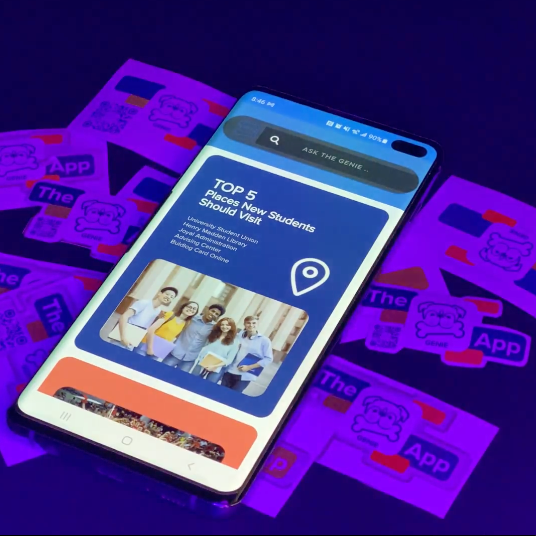
The Bulldog Genie’s main goal is to provide students with a resource that will not only make the transition back to on-campus learning smoother but also offer support for the rest of their time here. Providing that important and relevant information that students need anytime, anywhere to not only succeed on the first day or the first week, but to carry that success throughout their time here at Fresno State, in a way that is comfortable, convenient, and customizable. Designed and developed by students for students who understand those areas of student need and interest, the Genie will continue to grow and evolve to fit our diverse student population. This campus-wide collaborative initiative brings together different organizations and departments on campus to create a tool that provides a meaningful digital campus experience for ALL students.
The Hub of Digital Transformation and Innovation has partnered with Fresno State’s Associated Student Inc. to present our campus community with the Bulldog Genie. What is the Bulldog Genie? The Genie is an artificial intelligence-powered and personalized digital experience designed to engage and guide students through study and campus life at Fresno State. This untethered mobile experience will give new students 24/7 access to interactive campus navigation, a virtual digital companion, event notifications, and campus engagement resources, all to help support students’ success while attending college.
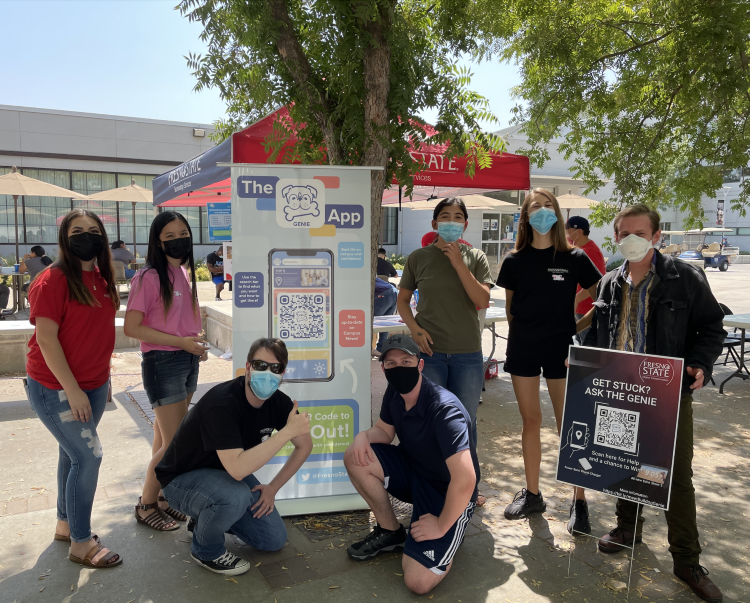
(09/2019 ~ Current ) Digital Agriculture Solution Hub
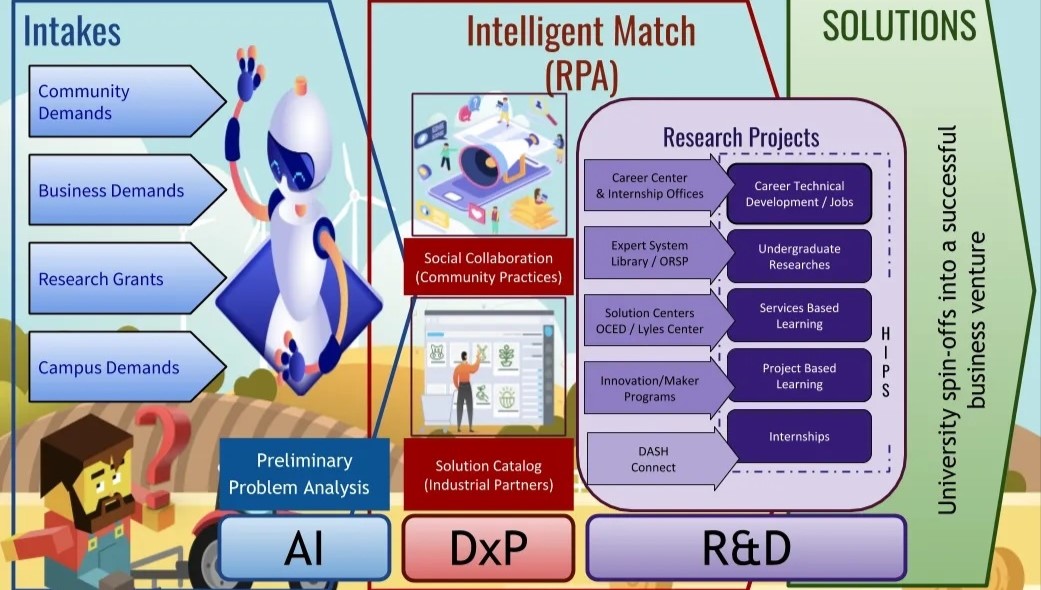
Agriculture has been at the cutting edge of technology use for over 150 years with farmers taking advantage of the technological breakthroughs developed by researchers at land grant colleges of agriculture. In an agricultural industry as diverse as the Central Valley’s, there are no one-size-fits-all solutions, but there is a shared need for novel thinking that solves real-world problems. With a partnership formed between the Jordan College of Agriculture Sciences and Technology and The Hub of Digital Transformation and Innovation, a new way of technology transfer and information distribution in agriculture was proposed, DASH.
The Digital Agriculture Solution Hub ( DASH) is a digital platform that applies Intelligent/Robotic Process Automation (IRPA) to Fresno State’s Agriculture Solution Center to improve operational efficiencies and streamline business practices. Submissions can be made through the DASH portal for requests pertaining to product development, testing, research, and personalized requests. This project contains a joint research component in Natural Language Processing (NLP) which allows entities and key phrases to be extracted from unstructured requests. Through various analyses of key phrases, sentiments, and context more insights on the request are obtained. Utilizing Artificial Intelligence and Robotic Process Automation requests are then matched to the right expert for fulfillment.
To streamline business practices, Business Managers can use DASH to manage and organize submitted inquiries and cases. Once a case is finalized, AI kicks in to match a case to an expert specializing in the skills and needs required. How do you ensure the right expert is matched to the case? Experts are able to use DASH’s CV Builder to create a digital portfolio directly in the DASH portal. Then DASH’s AI technology identifies the appropriate categories and areas of expertise from the expert’s digital portfolio.
Innovation Interns working on DASH get hands-on experience working with the latest technology, while also applying and expanding their educational experiences. DASH at Fresno State serves as both an academic innovation hotspot and a gateway to the surrounding agricultural and economic environment. This project facilitates multidisciplinary experiential learning opportunities, fosters industry partners, and drives entrepreneurship among students, researchers, growers, and AgTech supplies in the Central Valley.
(05/2019) CSU Innovates: Alexa Skill – Virtual Counselor Assistant
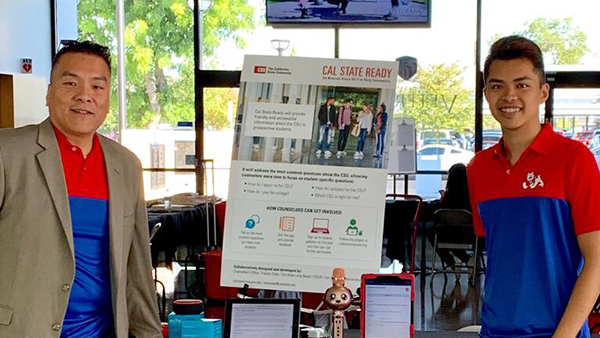
High School Counselors are an integral part of the school system, guiding students through their time at high school and preparing them for life after they graduate. High school counselors act as a valuable resource as students begin to prepare for the next steps on their educational journey, and many students prefer extra guidance and one-on-one sessions when it comes to college applications. However, the ratio of counselors to students is heavily imbalanced, with 844 students to one counselor reported in Fresno County alone (2017). This leaves many students without the support they need and counselors overworked and stretched thin.
In collaboration with the California State University Chancellor’s office and four CSU campuses including Fresno State, a virtual high school counselor’s assistant was developed to provide friendly, accessible information on how to prepare, apply, and pay for college within the CSU System. Developed as an Amazon Alexa Skill, this virtual assistant aids high school counselors in providing personalized support and helps students in obtaining information in a more timely manner. The Alexa skill provided updates directly from the Chancellor’s Office on initiatives, admission, academic preparation, financial aid, and student services for the upcoming academic year. Why Alexa? Alexa was selected for this project so that students could ask questions in a more natural and organic way without having to navigate a sea of web pages and sites to find answers. Students and counselors can access this important information anytime, anywhere.
For many high school students, the college application process can be daunting and many students often depend on counselors to keep them informed and motivated. With the Cal State Ready Alexa Skill, high school counselors are provided with more support as they prepare students for the college experience. With the application process being an important part of the Student Life Cycle, a smooth and easy transition from high school to college leaves a lasting impression on students and sets them up for success before they even set foot on campus.
(04/2018) CSU-AWS 50K Grant Round 1
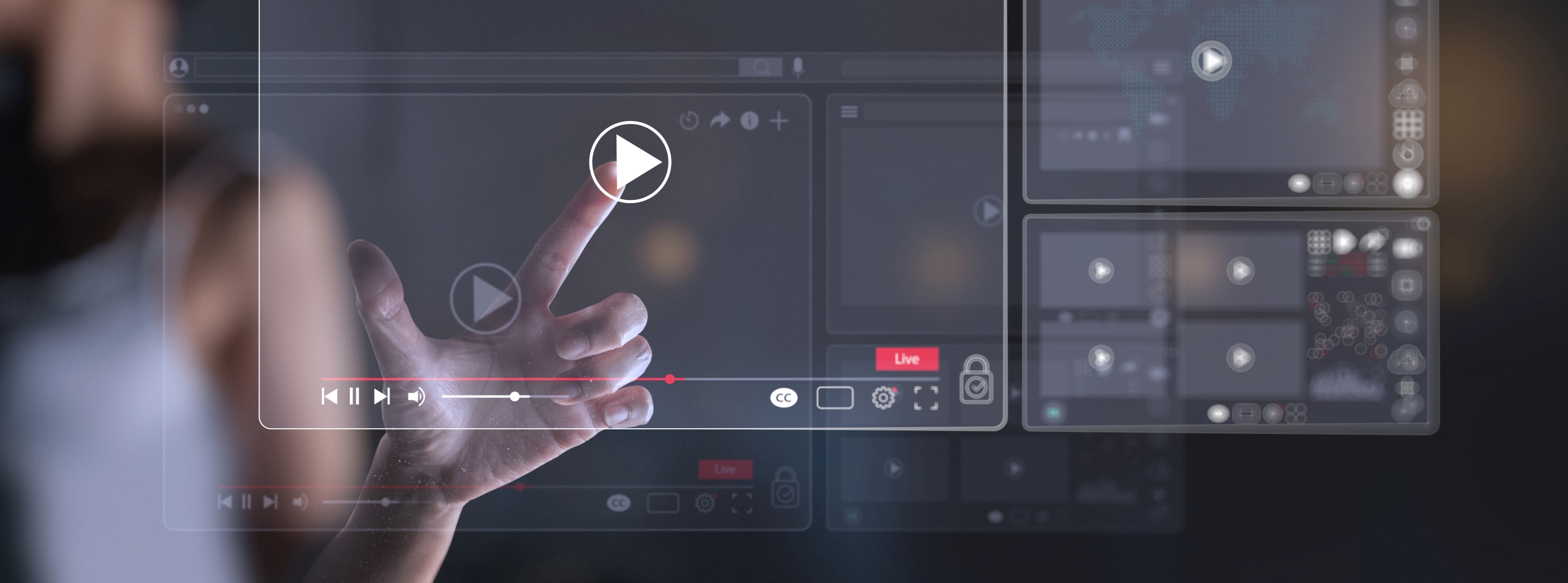
Universal design for learning (UDL) and digital accessibility are both approaches that seek to increase learning access and reduce barriers for students. UDL emphasizes a more flexible approach when it comes to instruction and the presentation of content making it easier for students to customize and adjust content to suit their individual learning needs. UDL targets a broad range of learners, while digital accessibility focuses on learners with needs related to sensory, physical, and/or cognitive impairments. An example of this is Closed Captioning, which couples content presentation with accommodations ensuring accessibility for all students. In a national survey conducted by the Oregon State University E-campus Research Unit in 2015, both students who reported having disabilities and those who did not were asked how helpful they found closed captions. Among those students, 59.1 percent reported that closed captions in course videos are very or extremely helpful with an additional 29 percent saying they were moderately helpful (Source).
At Fresno State the Academic Technology department captions a limited number of instructional video presentations without charge to faculty through funding by Academic Affairs. However, a collaborative project between two groups in the Technology Services organization (The Hub of Digital Transformation and Innovation and Academic Technology) and faculty research partners explores Automatic Speech Recognition (ASR) as a potentially cost-effective approach to producing accurate transcriptions for instructional video presentations. Accessible Instructional Video Content Streaming seeks to develop and implement an on-demand digital repository with Amazon CloudFront to deliver instructional video content in an HTTP Live Streaming (HLS) Mobile-ready format with Amazon Transcribe — an automatic speech recognition (ASR) service, to add speech to text capability for Accessibility — Closed Captioning. Other AWS Cloud services will also be integrated for video storage and archiving capabilities. A front-end UI will be designed for faculty to upload and manage videos with a dashboard for viewing statistics.
Universal design results in benefits for people beyond those in need of specific accommodations. In the survey conducted by OSU’s E-campus Research Unit, all student participants were asked to describe in their own words why closed captioning was helpful. The results showed that three-quarters of the respondents indicated that closed captions are helpful because they are learning aids with a large percentage also indicating that captions are helpful due to poor audio and sensitive environments ( Source). The benefits of closed captioning not only include accessibility, but also support different learning styles and environments. This project supports interdepartmental collaboration, innovation, and advancement of Cloud Technology and Artificial Intelligence in education to support student success.
(11/2017) AI Innovation in Teaching and Learning

As technology keeps evolving and advancing, educational practices will need to continue evolving as well to fit the needs of each new generation. For example, the younger generations are often categorized as quick learners and technology-oriented, but may struggle with ‘course information overload’. Many students in higher education expect a certain level of digital sophistication when it comes to their learning experiences. This is where Artificial Intelligence comes in. This technology can be used to create systems that respond to the individual student’s pace and progress to deliver additional support and resources, often referred to as ‘personalized learning’ platforms.
The Hub of Digital Transformation and Innovation and partners designed a user-friendly, intelligent learning environment that directs students to personalized learning experiences in real-time. The Virtual Learning Assistant (VLA) contains three components: Lecture Bot, Quiz Bot, and Augmented Analytics which together provide both students and faculty a more tailored pedagogical approach.
- Lecture Bot: Provides personalized self-paced learning. Students can review topics
whenever and wherever, view short instructional videos, view separate learning modules/subjects,
guide learning topics, and record conversations with the bot for further data/understandability
analysis.
- Quiz Bot: Provides assessments for students to validate the understanding of learning
material and recommend areas of improvement. Students will be provided an assessment
of each category outlining the associated learning objectives, answers and explanations
to support a deeper understanding of learning materials, and a summary of the assessment
results indicating areas of improvement.
- Augmented Analytics: Pinpoint suggested directions of improvements based on deeper data analysis (fine-grain sequential learning behavior data analysis).
The Virtual Learning Assistant prototype was piloted to a group of 50 students from CSCI 41: Introduction to Data Structures in the Fall of 2018. After using the VLA during their time in the course students were asked to fill out an evaluation.
- Overall what would you rate the VLA prototype (10 being the highest, 0 being the lowest)?
→ 84% of students rated the VLA prototype a 7 or above.
- Will you suggest future CSCI 41 students use VLA to help pass the course? → 68% said
yes, they would strongly suggest the VLA prototype to future students taking the course.
- The passing rate for CSCI 41 in Spring 2018 was 46%. In the Fall of 2018 with VLA integrated into the course the passing rate increased by 15%.
(07/2021) Immersive Technology Innovation Initiative
XR/Immersive technology has been emerging in higher education and is changing the way students learn. Immersive technology provides hands-on, accessible learning opportunities for many students. With interactive, engaging, 360 views, students can now truly immerse themselves in their learning environment. With VR/XR/AR providing new ways of connecting and collaborating, The Hub of Digital Transformation and Innovation is proposing Hubs/XR to facilitate interdisciplinary innovation and incubation frameworks for faculty, students, and staff across campus.
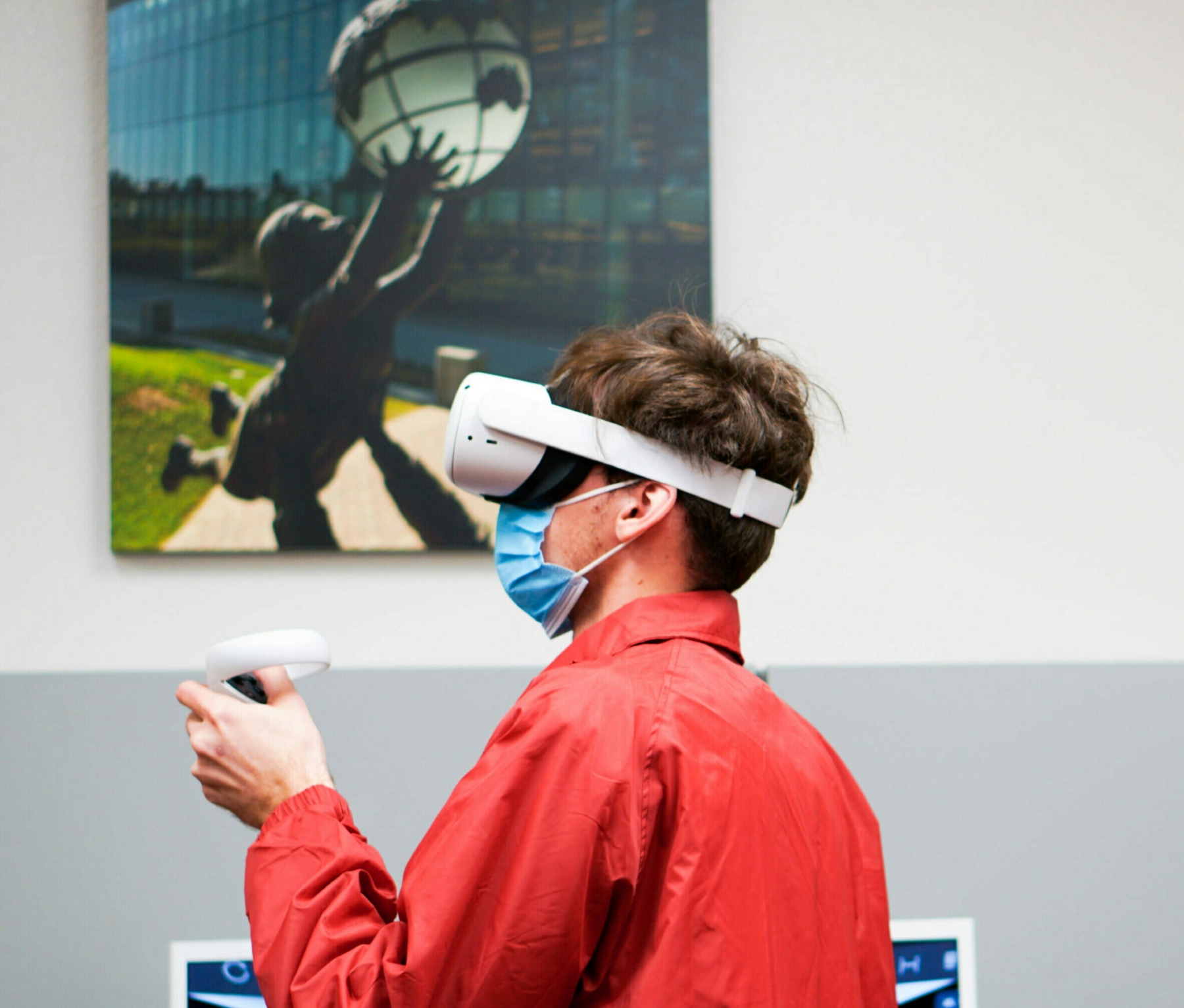
This initiative aligns with the University’s priority to embrace technology in support of innovation, teaching, and learning. VR/AR/XR immersive technologies are creating more accessible, engaging, and innovative ways of sharing ideas and experiences. As we see a shift in higher education towards more hands-on, application-based learning experiences, there is an opportunity to directly engage students with the learning material and also foster a deeper understanding of complex problem-solving. We are also seeing a shift in different industries as they embrace these new and emerging technologies. Students will need to beat the learning curve, and by utilizing advanced technologies in the classroom students are given the opportunity to better prepare for life after graduation. The Digital Information and Community of Practices Center promotes an inclusive and collaborative space for exploring how these immersive technologies can benefit faculty, students, and staff.
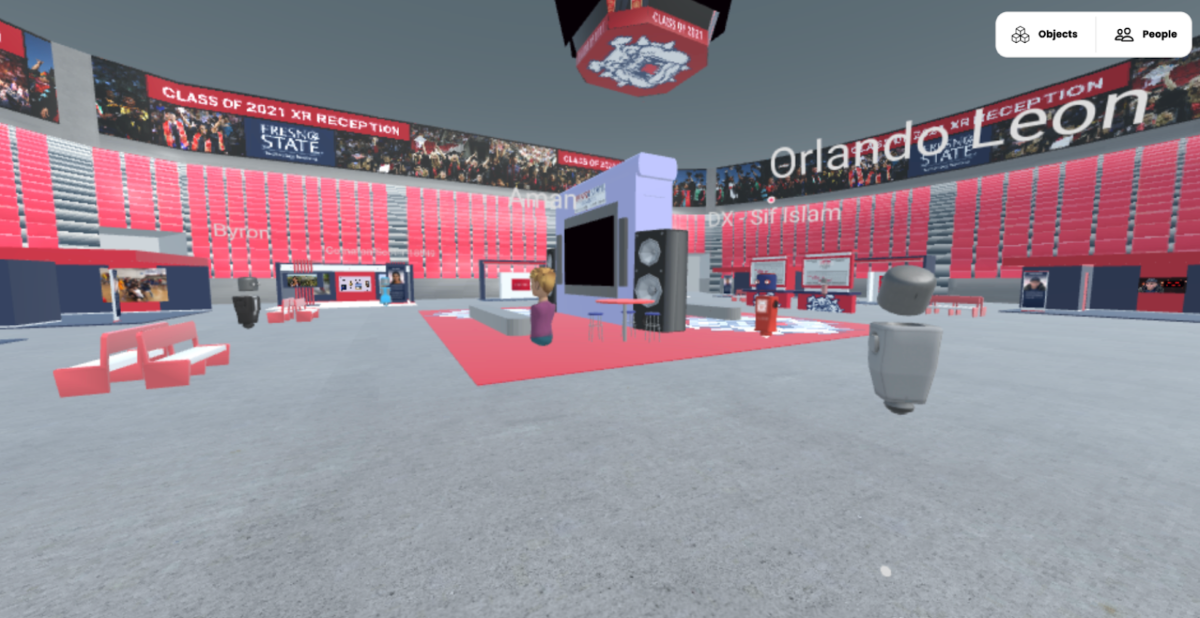
The Hub of Digital Transformation and Innovation seeks to host a campus-wide Digital Information and Community of Practices Center for VR/AR/XR, where campus faculty, staff, and students can come together in the Hubs/XR Platform to share current projects, future technology opportunities, and new initiatives. This initiative will include three components:
- A collection of faculty profiles highlighting experiences with VR/AR/XR.
- An emerging technologies site that showcases vendors, applications, and hosts VR/AR/XR
webinars.
- A Virtual Community of Practices for faculty, staff, and students to connect around similar topics, passions, and areas of expertise.
With VR/AR/XR having many different applications various colleges can facilitate Virtual Community of Practice in their areas of expertise to promote innovation and collaboration across colleges
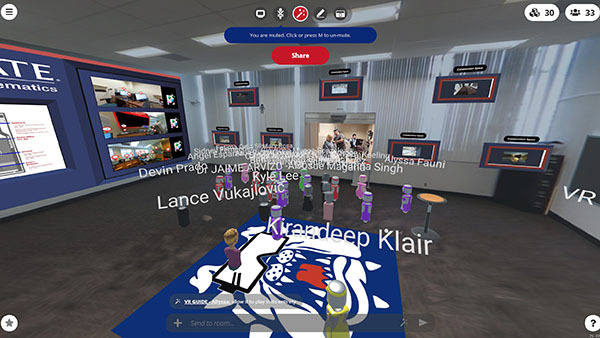
In Spring 2020 universities across the nation pivoted to virtual learning due to the COVID-19 pandemic. Almost 2 years later, we begin the transition back to in-person learning, understanding that our students will continue to face many unknowns. With students who started in Fall 2020 and freshmen who started in Fall 2021 having never experienced life on campus, normalcies such as locating classrooms, navigating campus resources, and participating in campus life are completely new territory. Our students will require additional support when it comes to navigating both academic and campus life, and universities will need innovative solutions to accommodate this increased amount of first-time on-campus experiences. How do we ensure students feel supported, welcome, and confident as they begin life on campus?

The Bulldog Genie’s main goal is to provide students with a resource that will not only make the transition back to on-campus learning smoother but also offer support for the rest of their time here. Providing that important and relevant information that students need anytime, anywhere to not only succeed on the first day or the first week, but to carry that success throughout their time here at Fresno State, in a way that is comfortable, convenient, and customizable. Designed and developed by students for students who understand those areas of student need and interest, the Genie will continue to grow and evolve to fit our diverse student population. This campus-wide collaborative initiative brings together different organizations and departments on campus to create a tool that provides a meaningful digital campus experience for ALL students.
The Hub of Digital Transformation and Innovation has partnered with Fresno State’s Associated Student Inc. to present our campus community with the Bulldog Genie. What is the Bulldog Genie? The Genie is an artificial intelligence-powered and personalized digital experience designed to engage and guide students through study and campus life at Fresno State. This untethered mobile experience will give new students 24/7 access to interactive campus navigation, a virtual digital companion, event notifications, and campus engagement resources, all to help support students’ success while attending college.

(07/2021) Immersive Technology Innovation Initiative
Cal State Tech Connect 2021 Conference highlighted the CSU campus’ great work enhancing privacy and security; fostering diversity, equity and inclusion; evolving technology, infrastructure, and services; leading, partnering, and collaborating; and teaching, learning, and transforming the student experience. Due to the virtual nature of this year’s event, conference coordinators wanted to create an innovative and engaging virtual space for attendees to socialize, display their work, and view the keynote presentations. When innovative and engaging digital spaces are needed, Virtual Reality is the solution.

CSU Cafe - Diversity, Equity, and Inclusion

CSU Cafe - Technology

CSU Cafe - Teaching and Learning
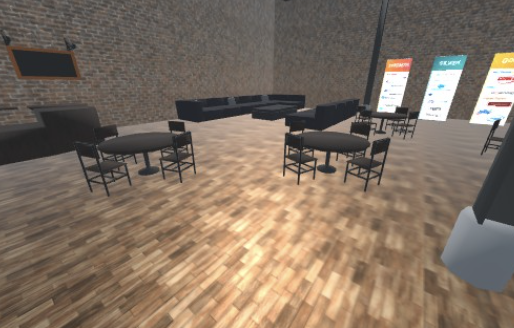
CSU Cafe - Privacy and Security
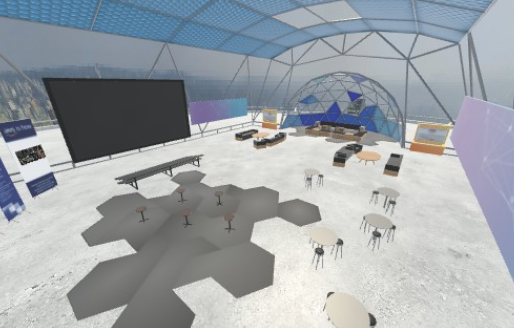
CSU Cafe - Leading, Partnering, Collaborating
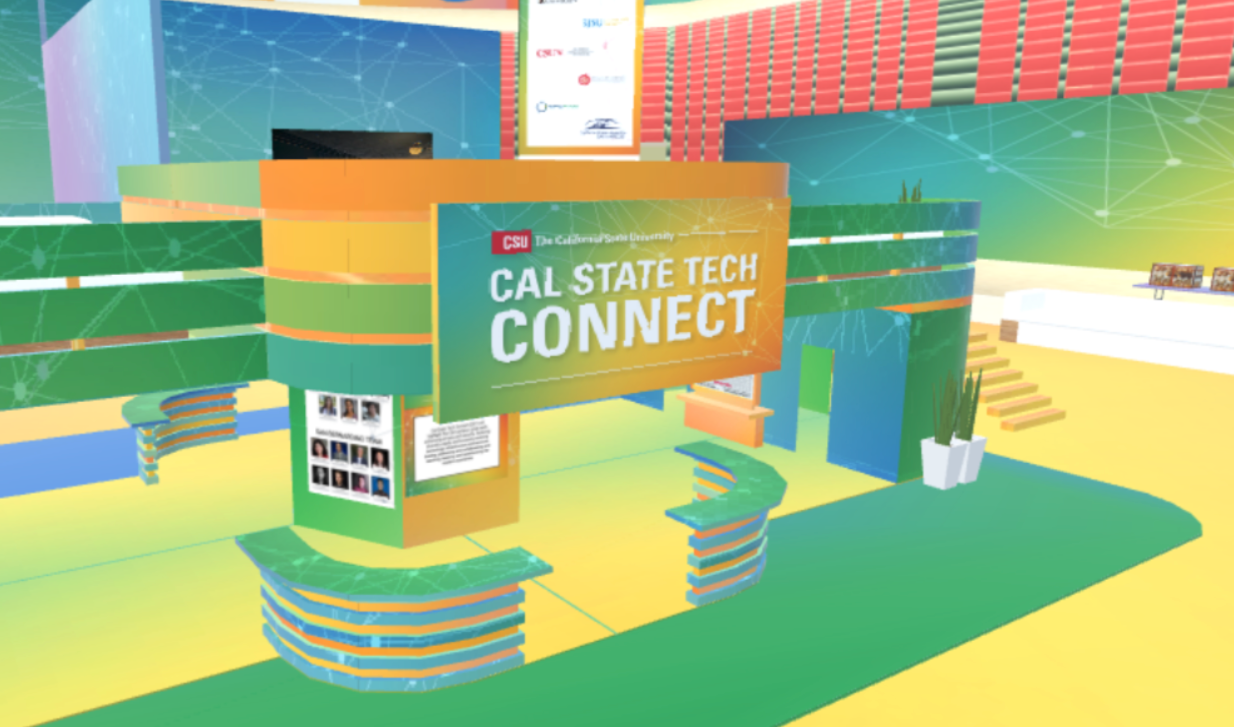
Sponsored by Cal StateTech, this collaboration between CSU Fresno and San Bernardino provided a streamlined, Extended Reality experience using Mozilla Hubs. Developers and designers from both campuses created custom virtual spaces to best serve conference attendees as they socialized, displayed their work, and attended instructional seminars. The Cal State Tech e(XR)po consisted of a Web Portal/Information Center and several different Extended Reality spaces:
- Exhibition Hall: A shared space for participating CSU campuses to showcase what VR technology looks like on their campus. Participating campuses included Cal Poly Pomona, San Diego State, CSU Channel Islands, San Jose State, and CSU San Marcos. Attendees could socialize and interact with the campus displays for a truly immersive experience.
- Campus Showrooms: Individual Showrooms for participating CSU campuses and Cal State Innovate to display their work on XR/VR technologies. Showrooms gave attendees the opportunity to connect more intimately with the participating campuses and get a more detailed snapshot of XR innovation across the CSU.
- CSU Cafe: Available in the morning hours of the conference, attendees could enjoy a cup of coffee with colleagues while watching the keynote presentations in any one of the 5 cafes modeled after a theme for this year’s conference.
- The Maze: An interactive gaming session, attendees can play their way through a shipwreck maze. Don’t know which way to go? Answer the trivia questions hidden within the maze for a clue!
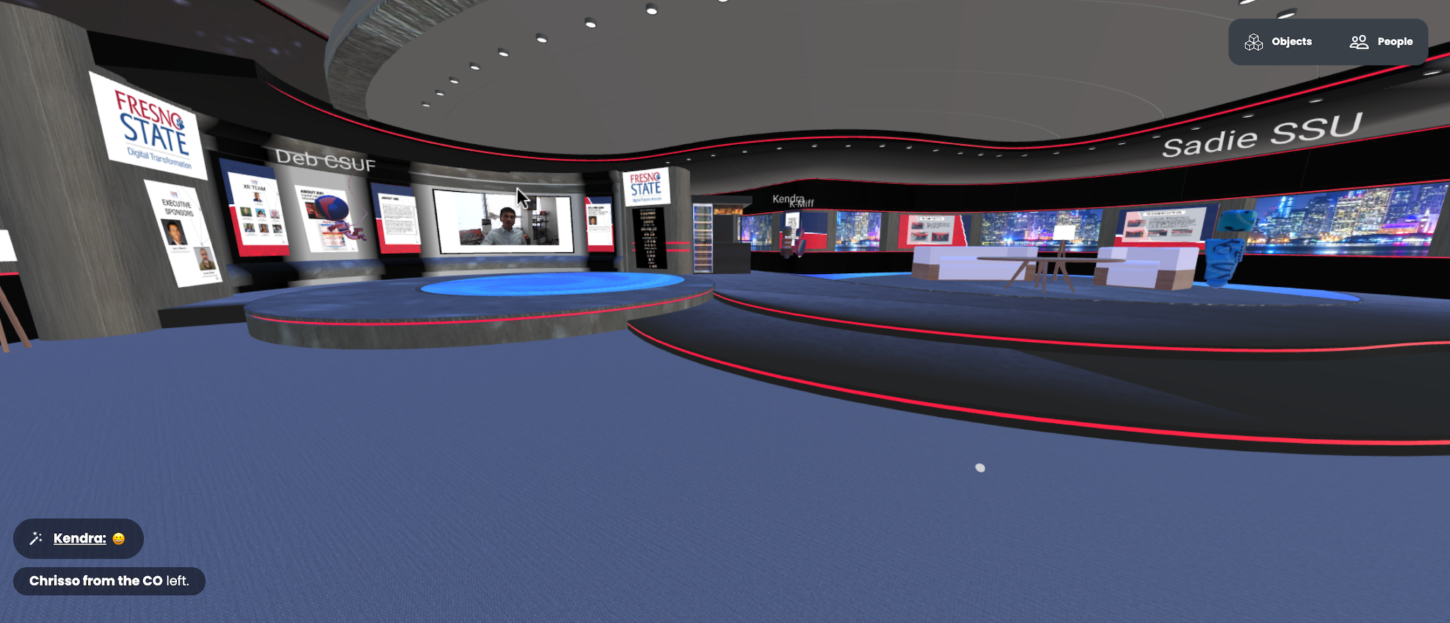
(06/2020) CSU-AWS Credits Grant

The United States is suffering from a shortage of healthcare professionals due to the COVID-19 pandemic. This creates challenges for patients seeking access to quality healthcare and leads to healthcare providers becoming overworked and overwhelmed. In this proposal, The Technology Services’ Hub of Digital Transformation and Innovation and the College of Health and Human Services Department of Kinesiology explore how Artificial Intelligence and immersive technologies can address challenges accessing follow-up care and improve communication between the healthcare provider and patient.
This campus-wide immersive technology collaboration seeks to develop an immersive healthcare assessment platform to evaluate patient recovery between office visits. The Immersive Healthcare Bot utilizes a patient-focused AI Bot and AWS Sumerian to provide an accessible and personalized patient experience. The AI bot uses evidence-based patient-reported outcome measures to ask the patient a series of questions and then analyze the responses. After the analysis is performed by the AI bot, a notification is sent to the patient’s healthcare provider notifying them when a minimally detectable change occurs. This solution will streamline the communication process between patients and healthcare providers, and create more accessible and meaningful patient-provider experiences.
AI and immersive technologies support active and experiential learning, enabling students to gain concrete experience that may not have been available otherwise. Students entering the healthcare industry will gain valuable experience on how to incorporate evidence-based practice into their patients’ lives. These hands-on, application-based learning experiences promote an increase in student engagement with the learning materials and a deeper understanding of complex problem-solving. As the healthcare industry evolves to embrace more AI/immersive technologies, students will need to beat the learning curve. Utilizing advanced technologies in the classroom better prepares students for life after graduation.
(06/2019) AWS-Robomaker
It is not uncommon to see mini mobile robots rolling around college campuses, with delivery robots making their debut on campuses from Ohio State to UC Berkeley. Robots can do so many things these days, but what kind of future do these roving bots have on Fresno State’s campus?
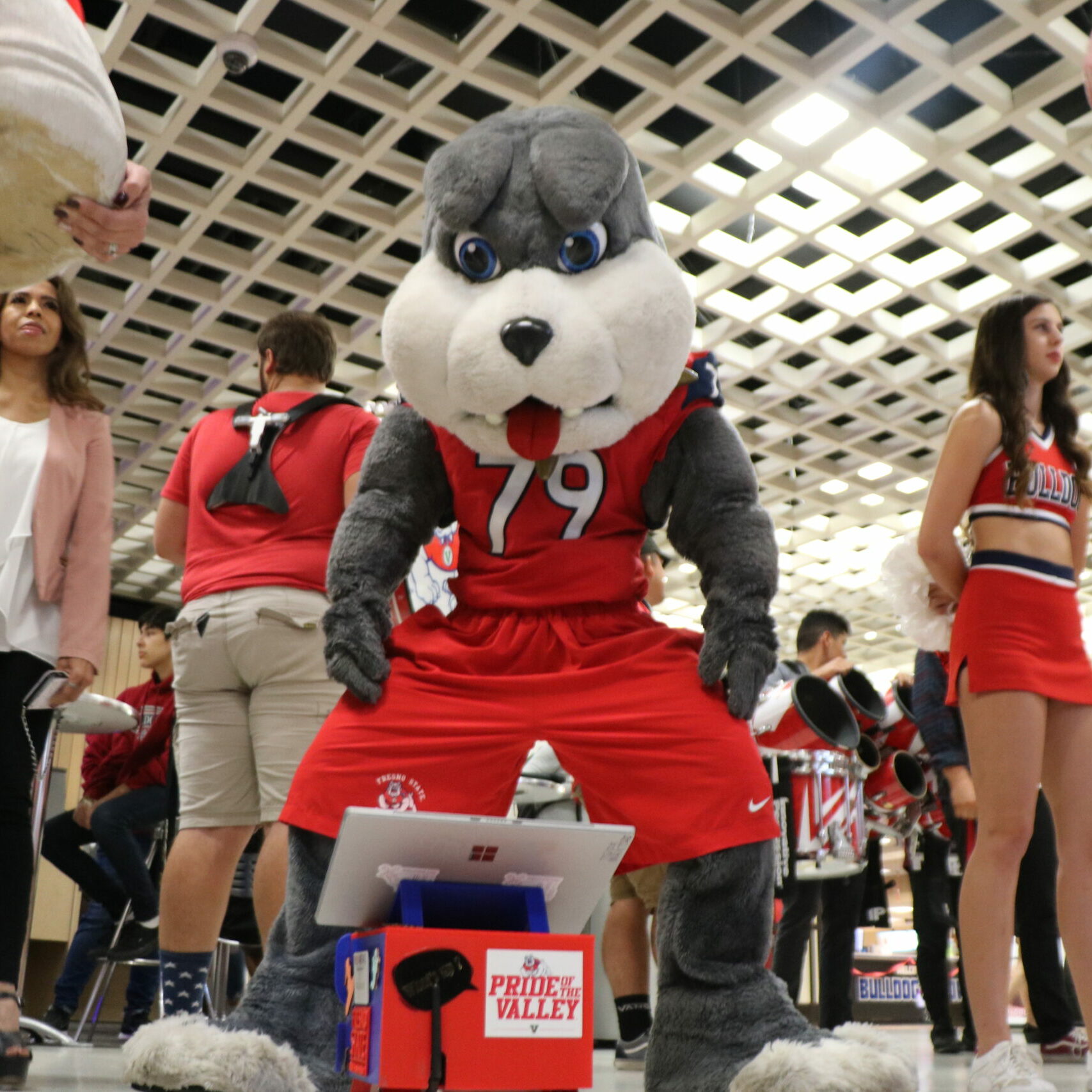
The development of the Bulldog Bot represented an exciting new opportunity for DXI Innovation Interns. Working in close partnership, The Hub of Digital Transformation, Student Involvement, Lyles Center for Innovation and Entrepreneurship, and Amazon provided a real-world, interdisciplinary project focused on enhancing the student experience at Fresno State. This was a chance for students to apply skills and technologies that they studied in class into a real-life application. By exploring and providing opportunities to work with artificial intelligence, machine learning, computer vision, and robotics, The Hub of Digital Transformation and Innovation hopes to encourage and motivate more students to innovate with Cloud technologies.
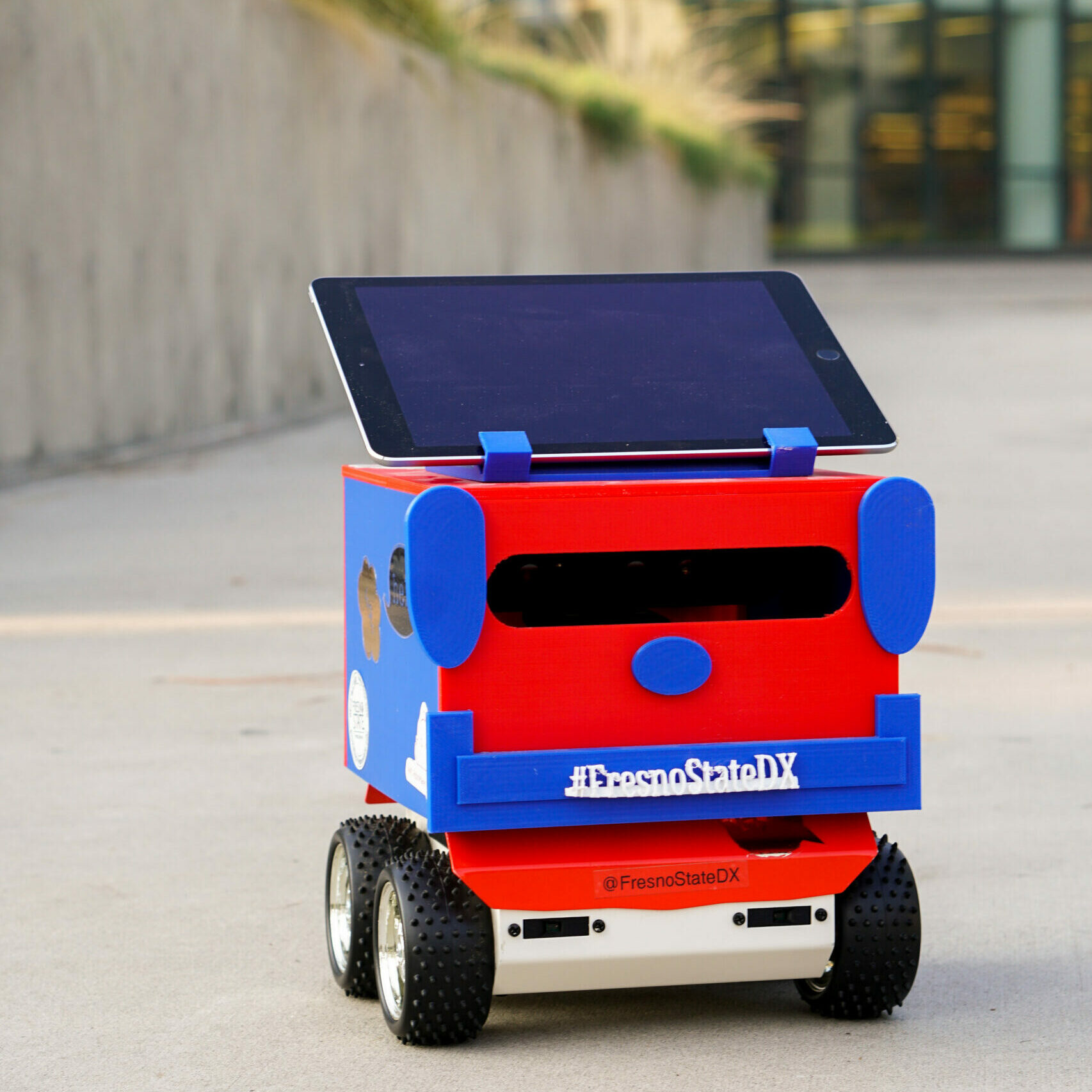
Let us introduce you to the Bulldog Bot, a robotic take on the beloved Victor E. built with AWS Robomaker and Amazon AI services. The Bulldog Bot made its debut at Fresno State Homecoming 2019 and engaged fans across campus by telling jokes, playing karaoke, and answering Fresno State Homecoming trivia questions. The Bulldog Bot was developed based on the open standards of Robot Operating System (ROS) incorporating Computer Vision (OpenCV), Voice-activated commands, Electronic Mapping, Location/Navigation and Sensors (Beacons) to navigate its surroundings. The Bulldog Bot was developed by innovation interns at The Hubs of Digital Transformation and Innovation through a learn-by-doing model with the advanced cloud-based skillsets to provide a strong foundation for high-tech digital literacy skills.
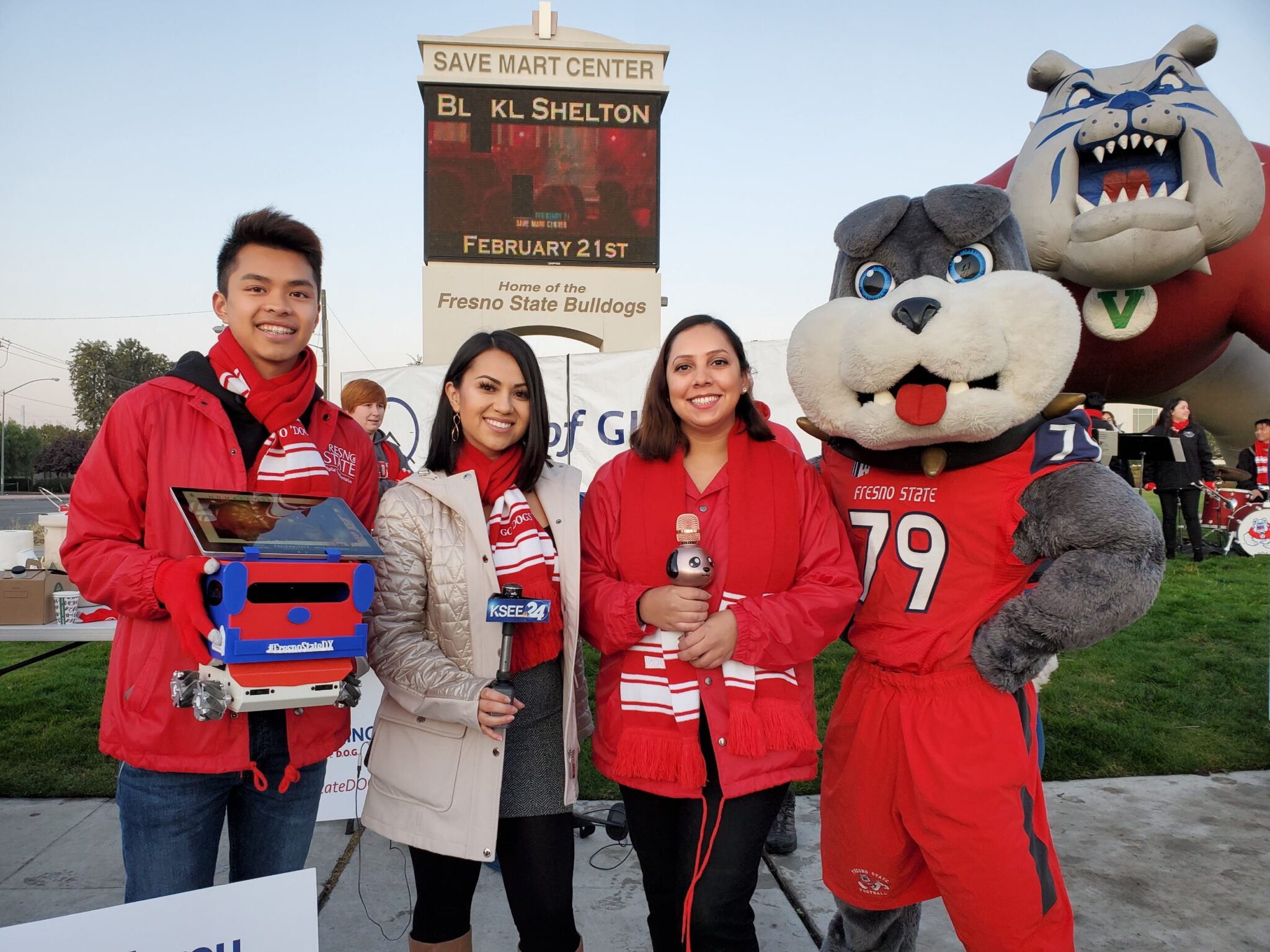
(09/2019 ~ Current ) Digital Agriculture Solution Hub

Agriculture has been at the cutting edge of technology use for over 150 years with farmers taking advantage of the technological breakthroughs developed by researchers at land grant colleges of agriculture. In an agricultural industry as diverse as the Central Valley’s, there are no one-size-fits-all solutions, but there is a shared need for novel thinking that solves real-world problems. With a partnership formed between the Jordan College of Agriculture Sciences and Technology and The Hub of Digital Transformation and Innovation, a new way of technology transfer and information distribution in agriculture was proposed, DASH.
The Digital Agriculture Solution Hub (DASH) is a digital platform that applies Intelligent/Robotic Process Automation (IRPA) to Fresno State’s Agriculture Solution Center to improve operational efficiencies and streamline business practices. Submissions can be made through the DASH portal for requests pertaining to product development, testing, research, and personalized requests. This project contains a joint research component in Natural Language Processing (NLP) which allows entities and key phrases to be extracted from unstructured requests. Through various analyses of key phrases, sentiments, and context more insights on the request are obtained. Utilizing Artificial Intelligence and Robotic Process Automation requests are then matched to the right expert for fulfillment.
To streamline business practices, Business Managers can use DASH to manage and organize submitted inquiries and cases. Once a case is finalized, AI kicks in to match a case to an expert specializing in the skills and needs required. How do you ensure the right expert is matched to the case? Experts are able to use DASH’s CV Builder to create a digital portfolio directly in the DASH portal. Then DASH’s AI technology identifies the appropriate categories and areas of expertise from the expert’s digital portfolio.
Innovation Interns working on DASH get hands-on experience working with the latest technology, while also applying and expanding their educational experiences. DASH at Fresno State serves as both an academic innovation hotspot and a gateway to the surrounding agricultural and economic environment. This project facilitates multidisciplinary experiential learning opportunities, fosters industry partners, and drives entrepreneurship among students, researchers, growers, and AgTech supplies in the Central Valley.
(04/2018) CSU-AWS 50K Grant Round 1

Universal design for learning (UDL) and digital accessibility are both approaches that seek to increase learning access and reduce barriers for students. UDL emphasizes a more flexible approach when it comes to instruction and the presentation of content making it easier for students to customize and adjust content to suit their individual learning needs. UDL targets a broad range of learners, while digital accessibility focuses on learners with needs related to sensory, physical, and/or cognitive impairments. An example of this is Closed Captioning, which couples content presentation with accommodations ensuring accessibility for all students. In a national survey conducted by the Oregon State University E-campus Research Unit in 2015, both students who reported having disabilities and those who did not were asked how helpful they found closed captions. Among those students, 59.1 percent reported that closed captions in course videos are very or extremely helpful with an additional 29 percent saying they were moderately helpful ( Source).
At Fresno State the Academic Technology department captions a limited number of instructional video presentations without charge to faculty through funding by Academic Affairs. However, a collaborative project between two groups in the Technology Services organization (The Hub of Digital Transformation and Innovation and Academic Technology) and faculty research partners explores Automatic Speech Recognition (ASR) as a potentially cost-effective approach to producing accurate transcriptions for instructional video presentations. Accessible Instructional Video Content Streaming seeks to develop and implement an on-demand digital repository with Amazon CloudFront to deliver instructional video content in an HTTP Live Streaming (HLS) Mobile-ready format with Amazon Transcribe — an automatic speech recognition (ASR) service, to add speech to text capability for Accessibility — Closed Captioning. Other AWS Cloud services will also be integrated for video storage and archiving capabilities. A front-end UI will be designed for faculty to upload and manage videos with a dashboard for viewing statistics.
Universal design results in benefits for people beyond those in need of specific accommodations. In the survey conducted by OSU’s E-campus Research Unit, all student participants were asked to describe in their own words why closed captioning was helpful. The results showed that three-quarters of the respondents indicated that closed captions are helpful because they are learning aids with a large percentage also indicating that captions are helpful due to poor audio and sensitive environments ( Source). The benefits of closed captioning not only include accessibility, but also support different learning styles and environments. This project supports interdepartmental collaboration, innovation, and advancement of Cloud Technology and Artificial Intelligence in education to support student success.
(04/2019) CSU-AWS 50K Grant Round 3
Information Security is a growing challenge for every organization. With cybersecurity threats and incidents increasing globally, it’s becoming more difficult for users to recognize and for cybersecurity programs to detect. The balance between sharing information and distributing information and the security issues that come with a wider spread of data is something that many universities are struggling to find. With layers of security properly implemented, an organization can do its best to detect and prevent possible security incidents before significant damage is done, but what preventive measures are available?
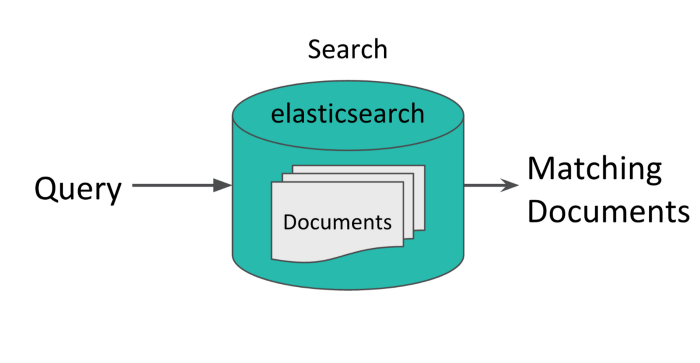
This project aligns with the Cloud Infrastructure Readiness and Cyber Security efforts at Fresno State and is a joint effort between the Information Security and Innovation teams. The proposed outcome seeks to minimize the time between the University learning of a threat and responding to the threat. The Innovation Interns working on this project gain valuable hands-on experience working with cloud computing technologies. This project supports DXI’s experiential learning model and supports students as they expand and apply their skills, better preparing them for their future careers.

The Hub of Digital Transformation and Innovation explored the AWS ELK Stack for improving information security. The Elk Stack contains three components (Elasticsearch, Logstash, Kibana) which work in tandem with ‘logging’ to track connections coming into the network. The ELK stack fulfills a need in the log analytics space, as IT shifts to a more cloud-based infrastructure.
A Breakdown of the ELK Stack:
- Elasticsearch: A tool used to extract certain key details from a log.
- Logstash: An open-source data ingestion tool that allows you to collect data from
a variety of sources, transform it, and send it to your desired destination.
- Kibana: A data visualization and exploration tool for reviewing logs and events.
How does it work:
Elasticsearch searches for log files that fit a certain outline specified by the user via Logstash and stores the file in a location specified by the configuration file. The user is then able to specify certain details that Elasticsearch will search, extract, and relay to Kibana. The AWS Elasticsearch service deploys, secures, searches, and analyzes security logs in near real-time. The integration of open-source tools Kibana and Logstash implement data ingestion and visualization.

(07/2021) Immersive Technology Innovation Initiative
XR/Immersive technology has been emerging in higher education and is changing the way students learn. Immersive technology provides hands-on, accessible learning opportunities for many students. With interactive, engaging, 360 views, students can now truly immerse themselves in their learning environment. With VR/XR/AR providing new ways of connecting and collaborating, The Hub of Digital Transformation and Innovation is proposing Hubs/XR to facilitate interdisciplinary innovation and incubation frameworks for faculty, students, and staff across campus.

This initiative aligns with the University’s priority to embrace technology in support of innovation, teaching, and learning. VR/AR/XR immersive technologies are creating more accessible, engaging, and innovative ways of sharing ideas and experiences. As we see a shift in higher education towards more hands-on, application-based learning experiences, there is an opportunity to directly engage students with the learning material and also foster a deeper understanding of complex problem-solving. We are also seeing a shift in different industries as they embrace these new and emerging technologies. Students will need to beat the learning curve, and by utilizing advanced technologies in the classroom students are given the opportunity to better prepare for life after graduation. The Digital Information and Community of Practices Center promotes an inclusive and collaborative space for exploring how these immersive technologies can benefit faculty, students, and staff.

- A collection of faculty profiles highlighting experiences with VR/AR/XR.
- An emerging technologies site that showcases vendors, applications, and hosts VR/AR/XR webinars.
- A Virtual Community of Practices for faculty, staff, and students to connect around similar topics, passions, and areas of expertise.
With VR/AR/XR having many different applications various colleges can facilitate Virtual Community of Practice in their areas of expertise to promote innovation and collaboration across colleges

(07/2021) Immersive Technology Innovation Initiative
Cal State Tech Connect 2021 Conference highlighted the CSU campus’ great work enhancing privacy and security; fostering diversity, equity and inclusion; evolving technology, infrastructure, and services; leading, partnering, and collaborating; and teaching, learning, and transforming the student experience. Due to the virtual nature of this year’s event, conference coordinators wanted to create an innovative and engaging virtual space for attendees to socialize, display their work, and view the keynote presentations. When innovative and engaging digital spaces are needed, Virtual Reality is the solution.

CSU Cafe - Diversity, Equity, and Inclusion

CSU Cafe - Technology

CSU Cafe - Teaching and Learning

CSU Cafe - Privacy and Security

CSU Cafe - Leading, Partnering, Collaborating

Sponsored by Cal StateTech, this collaboration between CSU Fresno and San Bernardino
provided a streamlined, Extended Reality experience using Mozilla Hubs. Developers
and designers from both campuses created custom virtual spaces to best serve conference
attendees as they socialized, displayed their work, and attended instructional seminars.
The Cal State Tech e(XR)po consisted of a Web Portal/Information Center and several
different Extended Reality spaces:
Exhibition Hall: A shared space for participating CSU campuses to showcase what VR
technology looks like on their campus. Participating campuses included Cal Poly Pomona,
San Diego State, CSU Channel Islands, San Jose State, and CSU San Marcos. Attendees
could socialize and interact with the campus displays for a truly immersive experience.
Campus Showrooms: Individual Showrooms for participating CSU campuses and Cal State
Innovate to display their work on XR/VR technologies. Showrooms gave attendees the
opportunity to connect more intimately with the participating campuses and get a more
detailed snapshot of XR innovation across the CSU.
CSU Cafe: Available in the morning hours of the conference, attendees could enjoy
a cup of coffee with colleagues while watching the keynote presentations in any one
of the 5 cafes modeled after a theme for this year’s conference.
The Maze: An interactive gaming session, attendees can play their way through a shipwreck
maze. Don’t know which way to go? Answer the trivia questions hidden within the maze
for a clue!
The Maze: An interactive gaming session, attendees can play their way through a shipwreck
maze. Don’t know which way to go? Answer the trivia questions hidden within the maze
for a clue!

(08/2020) Immersive Technology Innovation Initiative
As both faculty and staff prepared for a virtual Fall 2020 semester, many wondered what virtual learning would look like and how they would continue to engage students despite physical barriers. The Director of the College of Science and Mathematics Advising and Resources Center, Dr. Jaime Arvizu, was searching for a way to engage incoming freshmen and create virtual social and collaborative learning experiences. After connecting with The Hub of Digital Transformation and Innovation, the team sought to create a virtual environment for the purpose of social integration through collaboration, events and activities, and campus acclimation for incoming CSM freshmen. After much deliberation, and keeping accessibility and equity at the forefront, the team landed on the Hubs/XR platform.
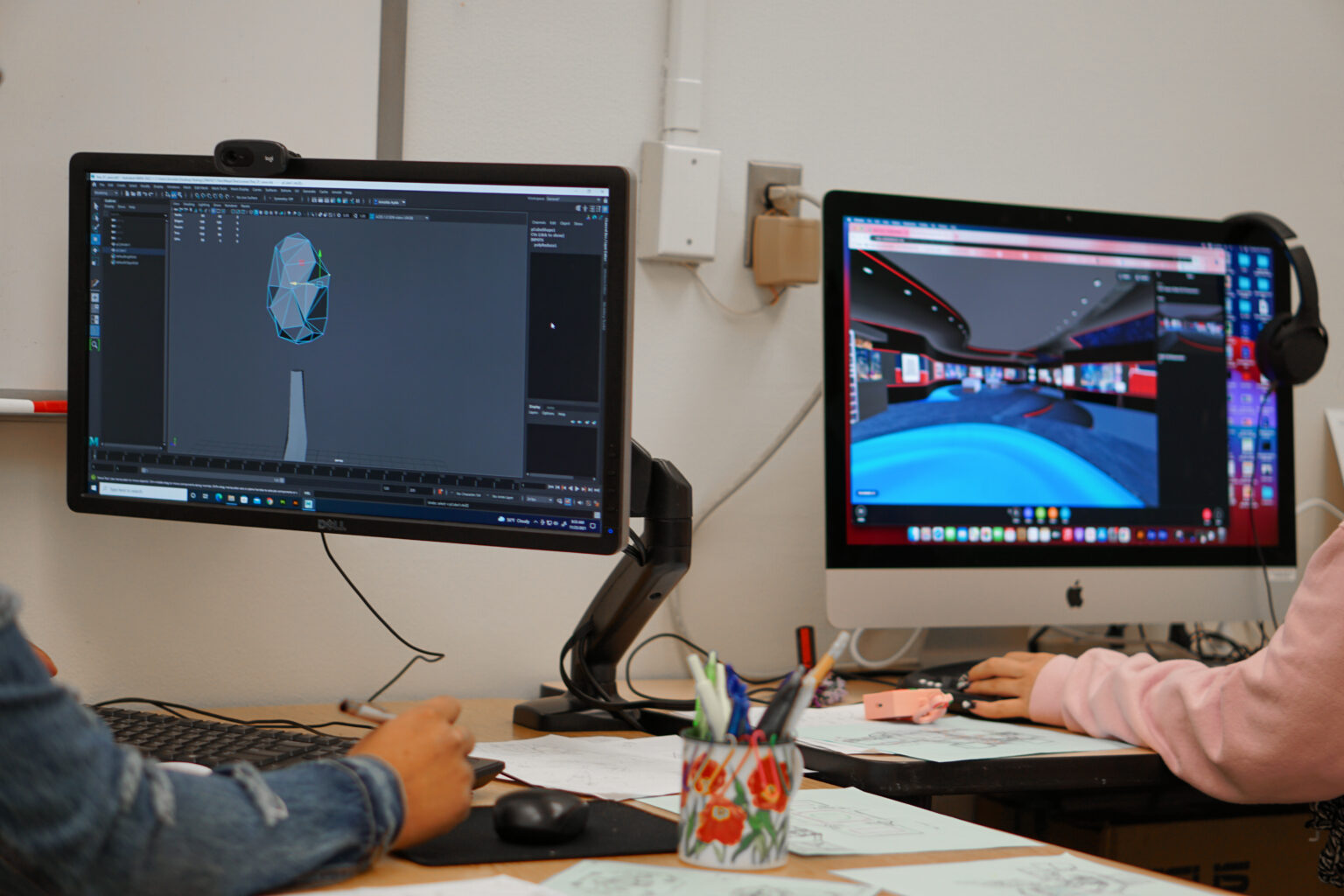
XR platforms like Hubs have provided students with the ability to enhance their learning and social engagement during a time when hands-on experiences were next to none. DXI has been working with the Hubs/XR platform for over a year and through these various collaborations, found success in the ability to customize these virtual environments to best serve campus partners and their event goals. Hubs/XR offers many channels of customization from both the backend and through easier customization on the frontend with no coding necessary, making it accessible to everyone. Hubs has supported student success for both the students working behind the scenes gaining valuable experience working with new and emerging technologies and the students enjoying the interactive and immersive scenes.
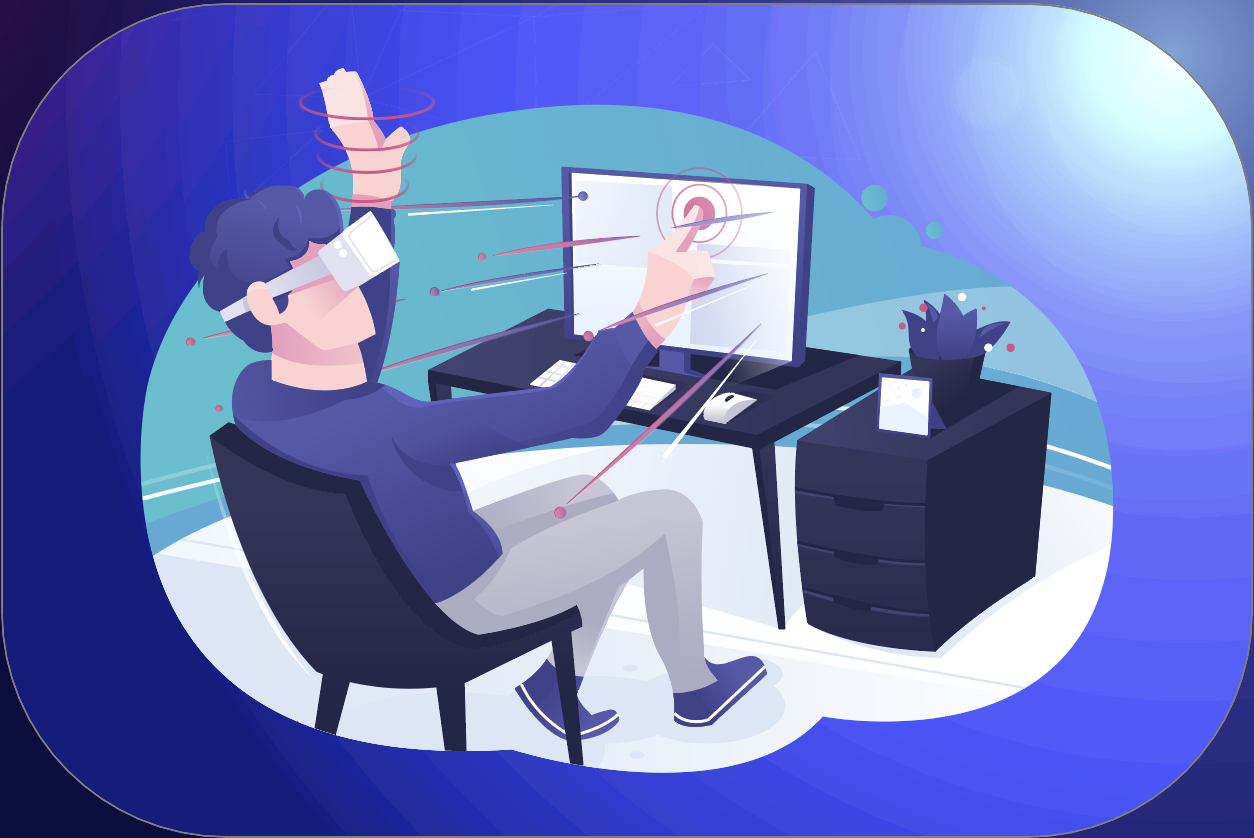
Hubs at Fresno State is a new Mixed Reality platform created by Digital Transformation and Innovation at Technology Services to offer an elevated digital experience for engagement and collaboration. It is more than a virtual campus for students to gather and socialize, it’s a tool that both faculty and students can use to enhance and develop their teaching and learning experiences. This platform is truly customizable and has supported collaboration through virtual learning, social engagement, and work environments. Choose an avatar and jump right in! HubsXR makes it easy to stay connected and communicate naturally with voice and text chat options. Easily share content and collaborate by dragging and dropping photos, videos, PDF files, links, and 3D models. Share your desktop screens and video camera to collaborate with others. Instantly create and share virtual spaces with friends, colleagues, and communities. When you create a room in Hubs, you now have a private virtual meeting space that you can instantly share – no downloads, coding, or VR headset necessary.
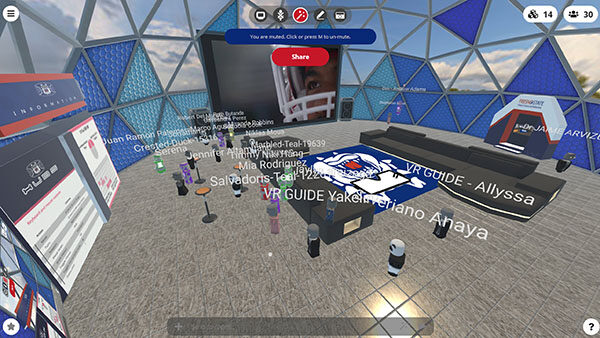
(06/2020) CSU-AWS Credits Grant

The United States is suffering from a shortage of healthcare professionals due to the COVID-19 pandemic. This creates challenges for patients seeking access to quality healthcare and leads to healthcare providers becoming overworked and overwhelmed. In this proposal, The Technology Services’ Hub of Digital Transformation and Innovation and the College of Health and Human Services Department of Kinesiology explore how Artificial Intelligence and immersive technologies can address challenges accessing follow-up care and improve communication between the healthcare provider and patient.
This campus-wide immersive technology collaboration seeks to develop an immersive healthcare assessment platform to evaluate patient recovery between office visits. The Immersive Healthcare Bot utilizes a patient-focused AI Bot and AWS Sumerian to provide an accessible and personalized patient experience. The AI bot uses evidence-based patient-reported outcome measures to ask the patient a series of questions and then analyze the responses. After the analysis is performed by the AI bot, a notification is sent to the patient’s healthcare provider notifying them when a minimally detectable change occurs. This solution will streamline the communication process between patients and healthcare providers, and create more accessible and meaningful patient-provider experiences.
AI and immersive technologies support active and experiential learning, enabling students to gain concrete experience that may not have been available otherwise. Students entering the healthcare industry will gain valuable experience on how to incorporate evidence-based practice into their patients’ lives. These hands-on, application-based learning experiences promote an increase in student engagement with the learning materials and a deeper understanding of complex problem-solving. As the healthcare industry evolves to embrace more AI/immersive technologies, students will need to beat the learning curve. Utilizing advanced technologies in the classroom better prepares students for life after graduation.
Visit the Program CITY website or with the button below
(07/2021) Cloud/Communication
Email is the only channel of communication that is both provided and required for Fresno State for students, staff, and faculty. With the shift to virtual learning and the decline of opportunities for in-person communication, we saw an increased reliance on other channels to deliver important messages to our campus community. Email has always been the primary channel of communication, but with so many different methodologies and tools being used, there are often inconsistencies and oversaturation. It is conservatively estimated that Fresno State sends more than half a million group emails to students per month, this does not include academic communications, personal emails, or notifications from Canvas. This results in a growing need among students for personalized, impactful, and consistent communication.
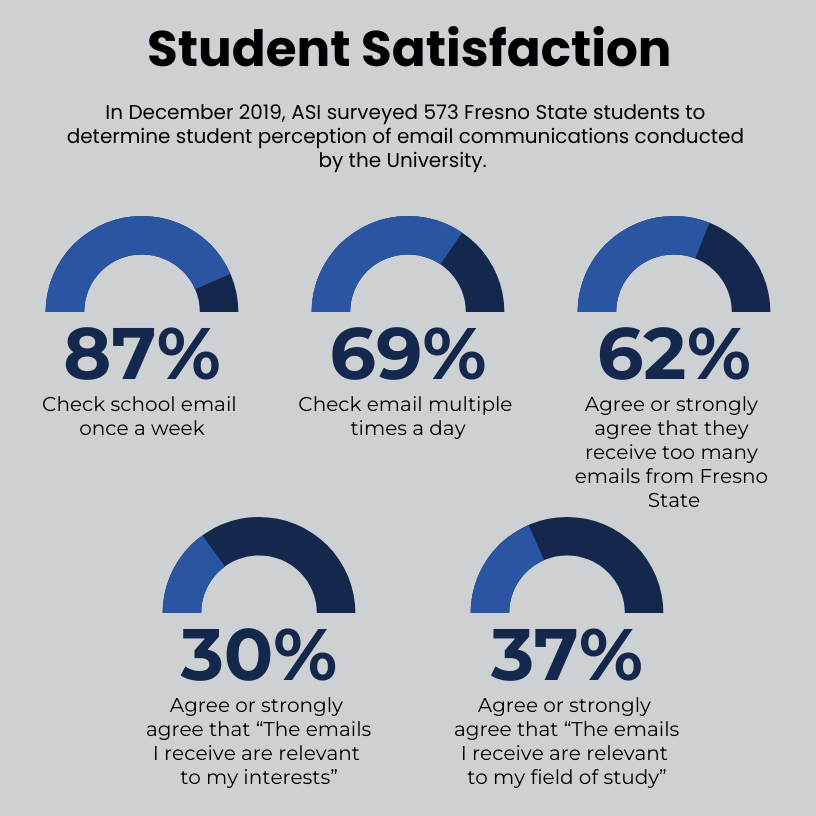
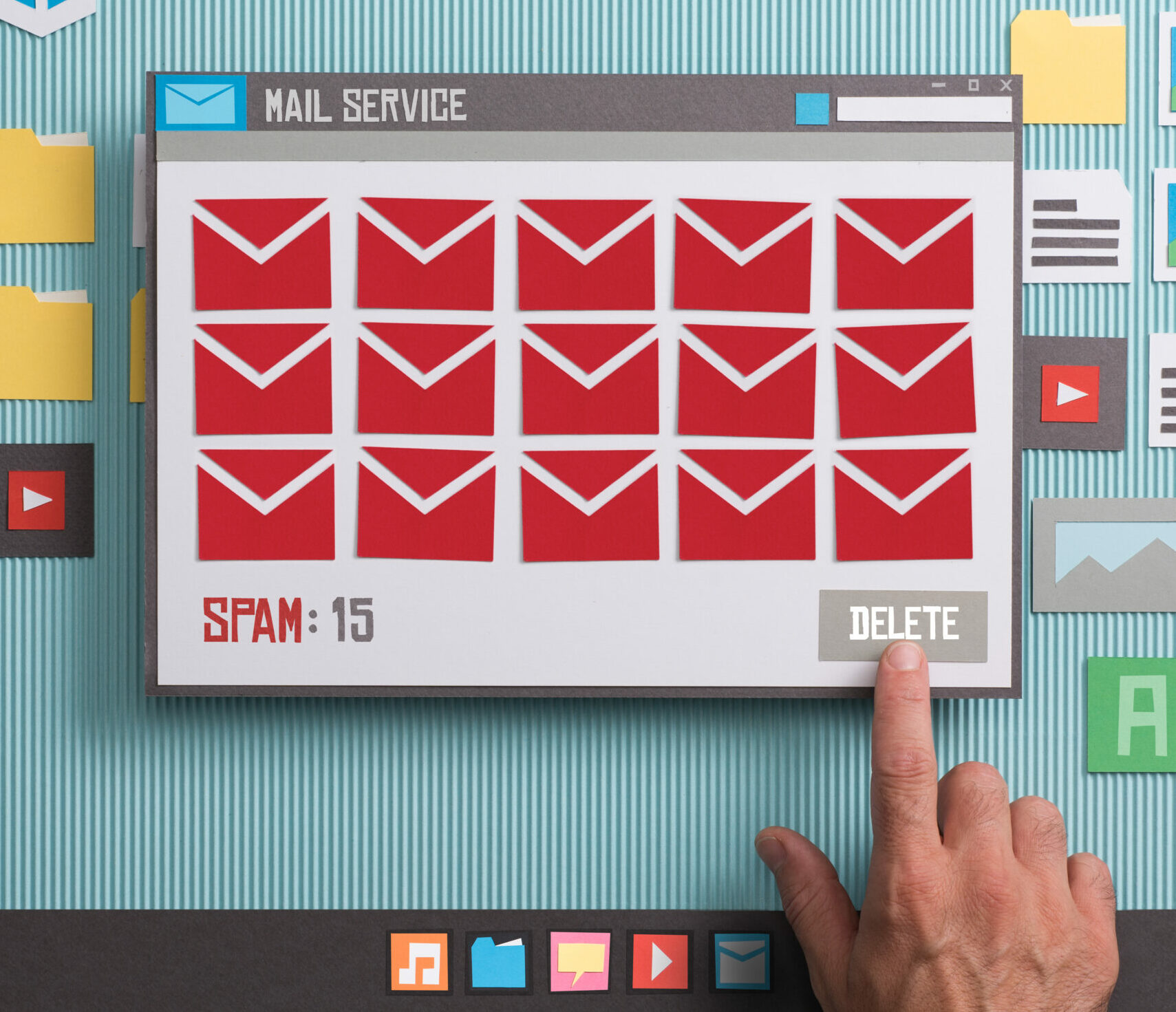
This joint effort between Associated Student Inc. and The Hub of Digital Transformation and Innovation seeks to streamline business processes and allow for more effective communication between students and the University. The MVP Communicator Platform enables control, visibility, and planning for internal group email communications while also giving students the ability to personalize their communication experience. So, what does this look like?
University: The MVP Communicator Platform will act as a single point of contact for distribution and analytics. University Communicators will be able to organize channels and send emails, while also viewing insights such as subscriber count and email views. Platform Administrators will also be able to manage channel communicators, create new email channels, and view channel analytics all from the MVP platform.
Students: With the MVP Communicator Platform students can personalize their communication experience to better fit their preferences using a tiered opt-in/opt-out system, giving them more control over the volume of emails they receive.
- Tier 1: Required by University / automatically subscribed
- Tier 2: Recommended by University / automatically subscribed (can opt-out)
- Tier 3: Student preference (opt-in/opt-out)
Streamlining the communication process and giving students the ability to customize their email preferences, opens the door for University Communicators to create more targeted and impactful communications and gain valuable insights into the audience their most important audience. This partnership between Fresno State’s Associated Student Inc. and The Hub of Digital Transformation and Innovation highlights the power of student-driven innovation on campus and involves students directly in establishing technology experience and a communication hierarchy.
(09/2019 ~ Current ) Digital Agriculture Solution Hub

Agriculture has been at the cutting edge of technology use for over 150 years with farmers taking advantage of the technological breakthroughs developed by researchers at land grant colleges of agriculture. In an agricultural industry as diverse as the Central Valley’s, there are no one-size-fits-all solutions, but there is a shared need for novel thinking that solves real-world problems. With a partnership formed between the Jordan College of Agriculture Sciences and Technology and The Hub of Digital Transformation and Innovation, a new way of technology transfer and information distribution in agriculture was proposed, DASH.
The Digital Agriculture Solution Hub ( DASH) is a digital platform that applies Intelligent/Robotic Process Automation (IRPA) to Fresno State’s Agriculture Solution Center to improve operational efficiencies and streamline business practices. Submissions can be made through the DASH portal for requests pertaining to product development, testing, research, and personalized requests. This project contains a joint research component in Natural Language Processing (NLP) which allows entities and key phrases to be extracted from unstructured requests. Through various analyses of key phrases, sentiments, and context more insights on the request are obtained. Utilizing Artificial Intelligence and Robotic Process Automation requests are then matched to the right expert for fulfillment.
To streamline business practices, Business Managers can use DASH to manage and organize submitted inquiries and cases. Once a case is finalized, AI kicks in to match a case to an expert specializing in the skills and needs required. How do you ensure the right expert is matched to the case? Experts are able to use DASH’s CV Builder to create a digital portfolio directly in the DASH portal. Then DASH’s AI technology identifies the appropriate categories and areas of expertise from the expert’s digital portfolio.
Innovation Interns working on DASH get hands-on experience working with the latest technology, while also applying and expanding their educational experiences. DASH at Fresno State serves as both an academic innovation hotspot and a gateway to the surrounding agricultural and economic environment. This project facilitates multidisciplinary experiential learning opportunities, fosters industry partners, and drives entrepreneurship among students, researchers, growers, and AgTech supplies in the Central Valley.
(06/2021) Immersive Technology Innovation Initiative
In Summer 2021, Fresno Unified School District (FUSD) held its annual Innovation Day. Fresno Unified School District’s Innovation Day challenges 4th-8th grade students to think outside the box and use creative thinking. Posed with a challenge or questions students developed and presented their innovative solutions to their peers, parents, and other schools in the district. Due to the virtual nature of this year’s event, there was a need to create an engaging and innovative virtual space for students, families, teachers, and administrators to socialize and view student work.
Despite the physical barriers presented by the pandemic, FUSD students were still able to express their creativity and innovation, while also experiencing new and emerging technologies. Through collaboration with different campus and community partners, the Innovation Day Design and Development Teams were able to provide FUSD students and their families with a fun and engaging virtual event.
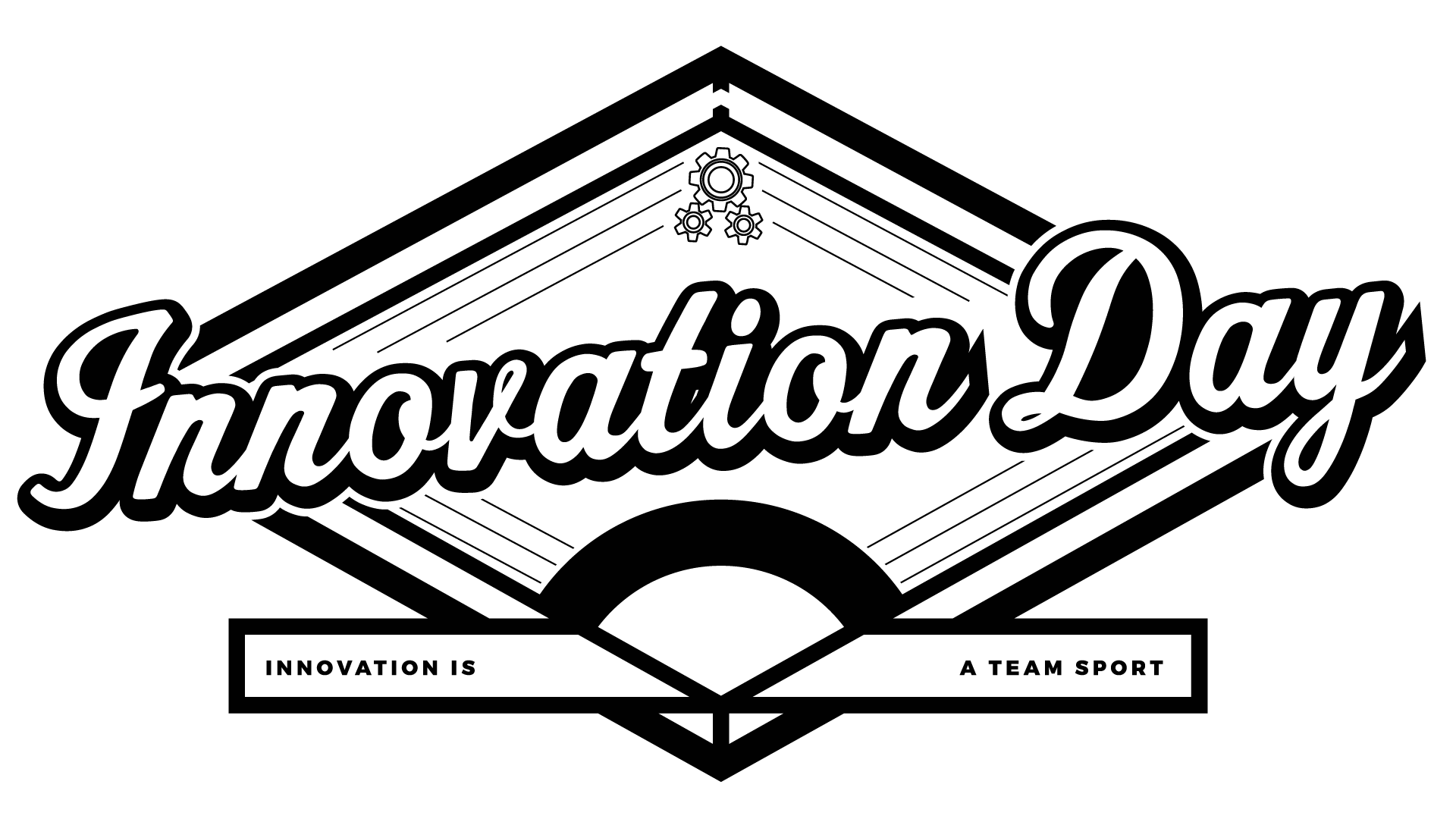
Fresno State’s Lyles Center for Innovation and Entrepreneurship partnered with The Hubs of Digital Transformation and Innovation to create both a portal website and a Hubs XR Showcase to display student work and engage with the attendees. Both of these elements worked in tandem to create a seamless online experience. On the day of the event, attendees would first land on the portal website. Here they could learn about Innovation Day, view student submissions, and vote for their favorite. When attendees visited the XR environment, they could view past Innovation Day Events and socialize with the FUSD community.
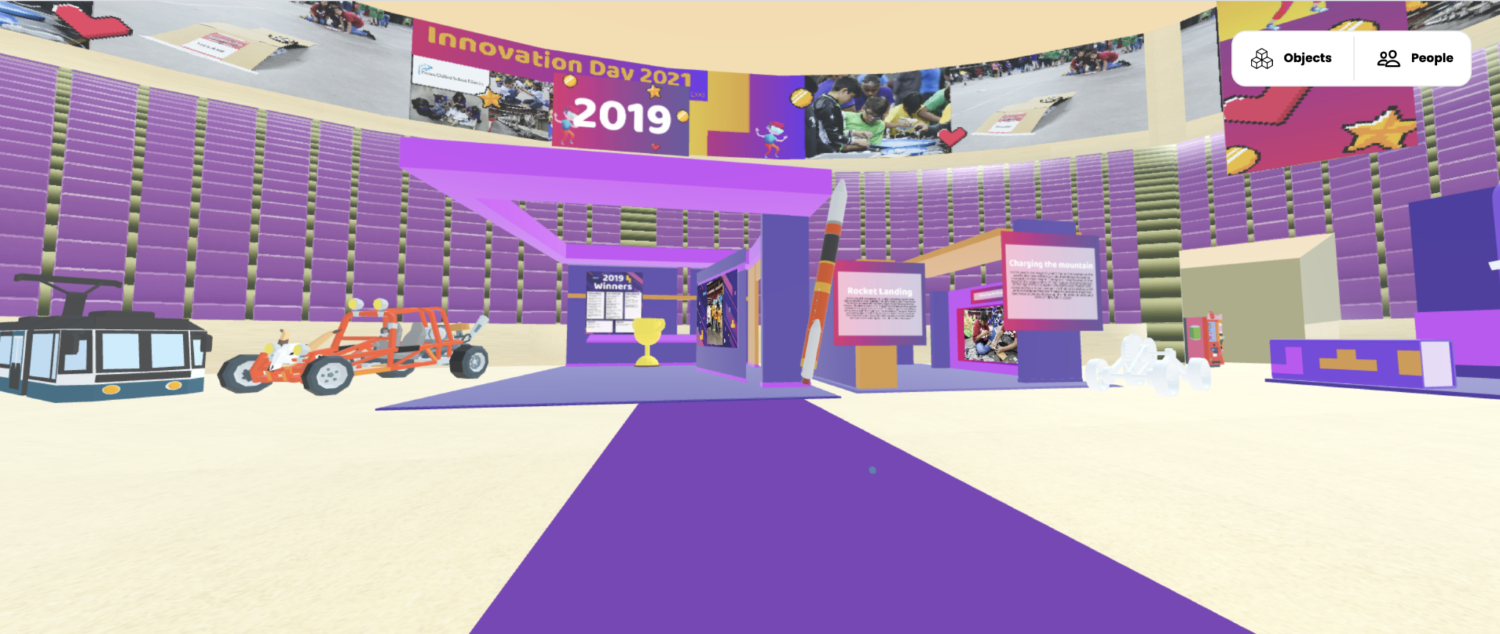
(02/2019 to Current) Interdisciplinary Student Innovation and Incubation
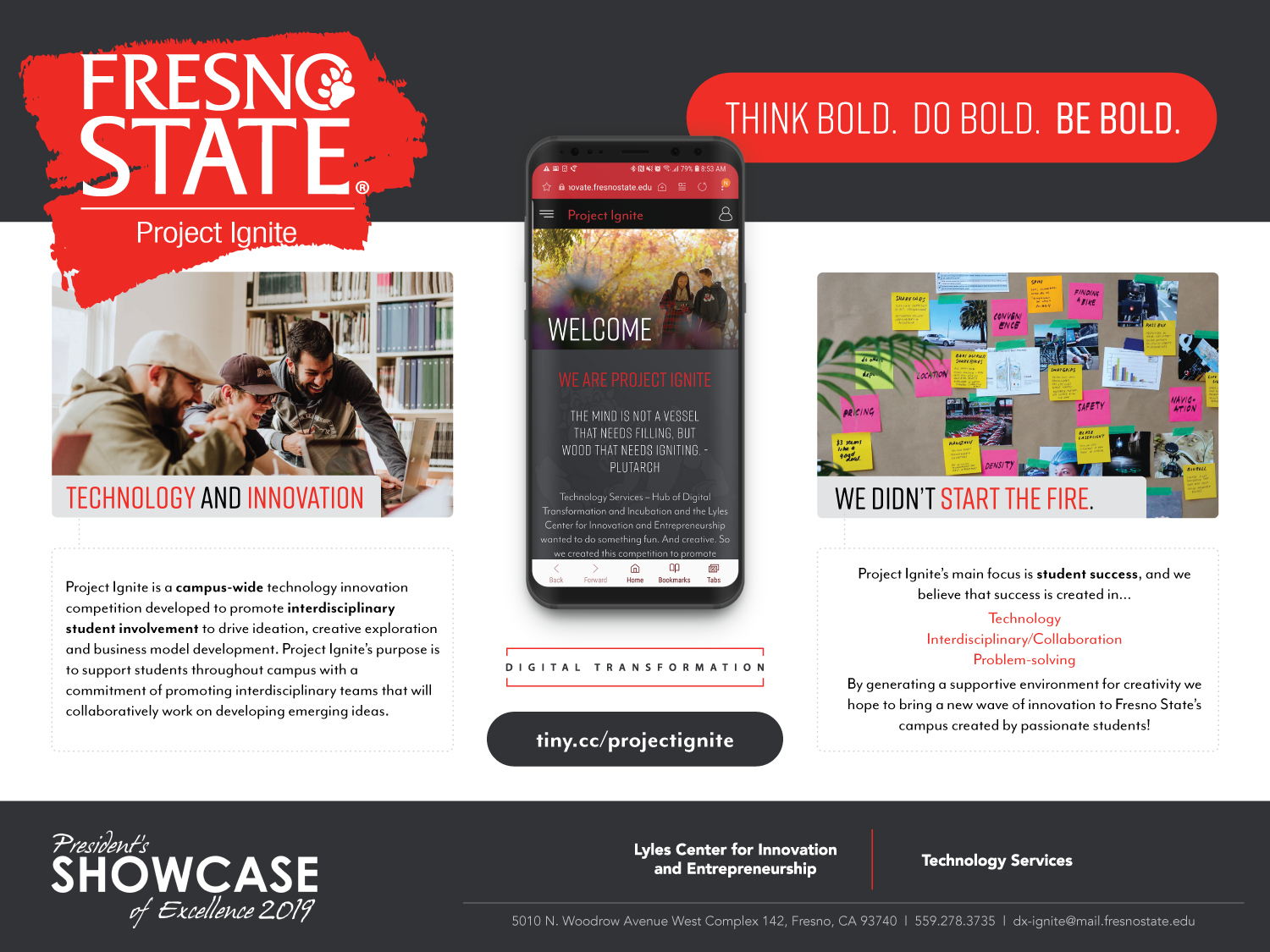
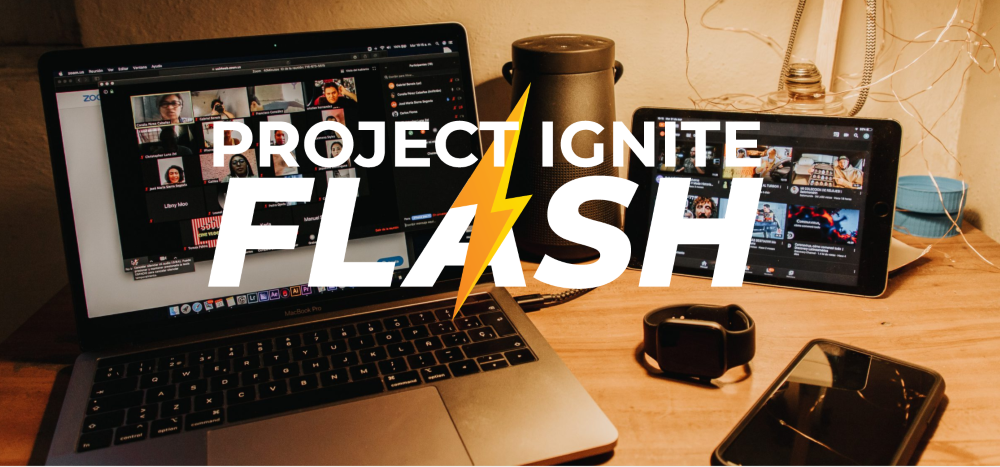
In technology innovation digital skills are a crucial part of preparing students for the workplace, but as technology advances skills such as collaboration, communication, and creativity are becoming just as critical. It is important for students to develop and identify these skills in solution development frameworks to better adapt to changing workplace expectations. A platform such as Project Ignite provides students the opportunity to connect their ideas, interact with diverse perspectives, and gain experience in all areas of solution development.
Project Ignite is a campus-wide technology innovation program developed through a collaboration between the Technology Services — Hub of Digital Transformation and Innovation and the Lyles Center for Innovation and Entrepreneurship. Students from all across campus collaborate in teams to develop innovative solutions to campus dilemmas. Project Ignite promotes interdisciplinary student involvement to drive ideation, creative exploration, and business model development.
Project Ignite (Flash) is a virtual edition of the Project Ignite Program developed to continue promoting interdisciplinary innovation and collaboration despite the physical barriers presented by the pandemic. In Project Ignite (Flash) students learned about Virtual Immersive Technology and Design Thinking and how pairing these two powerful components can lead to powerful solutions. Mentored in the art of product design, development, and pitching students developed innovative applications that supported student life, academic success, and campus infrastructure.
Why do we need a program like Project Ignite? Hands-on learning experiences give students the opportunity to apply and expand on the experiences and skills they learn in the classroom. Programs like Project Ignite elevate learning experiences by creating an open environment where students can freely explore innovation and entrepreneurship. By marrying the creativity of the young mind with the academic foundation of untethered intellectual curiosity, Project Ignite creates a platform that encourages students to explore, evaluate, potentially fail, and hopefully succeed.
(04/2020) CSU Innovation Minigrant 20-21

With COVID-19 cases on the rise in the United States, school closures across the nation have affected millions of students. Current evidence from the CDC suggests that the SARS-CoV-2 may remain viable on a variety of surfaces for hours and even days. Many schools have taken preventive measures such as implementing hand sanitizing stations and adopting more rigorous cleaning regimes. In an effort to support and streamline preventive measures by the University, DXI’s Homecoming Bulldog Bot evolved to fit the immediate needs of the campus community.
The proposed Bulldog ‘Wellness’ Bot is an automated intelligent robotic system that will disinfect areas on campus without human intervention. Programmed with AI-powered navigation and enhanced with computer vision, the Bulldog ‘Wellness’ Bots will identify ‘hotspots’ on campus and disinfect the environment while minimizing the likelihood of being exposed to any pathogens. The proposed solution takes into account the environmental impacts of disinfecting agents, by equipping Wellness Bots with powerful UV-C lights to kill off any pathogens lingering on surfaces.
This proposal includes students, faculty, and staff from Facilities Management, Custodial Services, Student Health, and Counseling Center, and Environmental Health, Safety, and Risk Management collaborating on solution design and effectiveness. Students gained valuable hands-on experiences in both AI/Robotics and effective communication and collaboration skills working with partners across campus.
(06/2019) AWS-Robomaker
It is not uncommon to see mini mobile robots rolling around college campuses, with delivery robots making their debut on campuses from Ohio State to UC Berkeley. Robots can do so many things these days, but what kind of future do these roving bots have on Fresno State’s campus?

The development of the Bulldog Bot represented an exciting new opportunity for DXI Innovation Interns. Working in close partnership, The Hub of Digital Transformation, Student Involvement, Lyles Center for Innovation and Entrepreneurship, and Amazon provided a real-world, interdisciplinary project focused on enhancing the student experience at Fresno State. This was a chance for students to apply skills and technologies that they studied in class into a real-life application. By exploring and providing opportunities to work with artificial intelligence, machine learning, computer vision, and robotics, The Hub of Digital Transformation and Innovation hopes to encourage and motivate more students to innovate with Cloud technologies.

Let us introduce you to the Bulldog Bot, a robotic take on the beloved Victor E. built with AWS Robomaker and Amazon AI services. The Bulldog Bot made its debut at Fresno State Homecoming 2019 and engaged fans across campus by telling jokes, playing karaoke, and answering Fresno State Homecoming trivia questions. The Bulldog Bot was developed based on the open standards of Robot Operating System (ROS) incorporating Computer Vision (OpenCV), Voice-activated commands, Electronic Mapping, Location/Navigation and Sensors (Beacons) to navigate its surroundings. The Bulldog Bot was developed by innovation interns at The Hubs of Digital Transformation and Innovation through a learn-by-doing model with the advanced cloud-based skillsets to provide a strong foundation for high-tech digital literacy skills.

MICROCREDENTIALS / DIGITAL BADGES
(06/2018) CSU Innovation Minigrant 18-19
The rise of Blockchain has led to many institutions in higher education exploring innovative ways to transform the collection and distribution of data and information. With Blockchain offering a more secure and user-friendly approach to student records and new pedagogy, innovators are looking to move towards the Internet of Value and away from an Internet of Information dependent on centralized institutions to exchange things of value. The current state of higher education is shifting from a “degree-centric environment” to facilitating lifelong learning through secure, learner-owned documentation and certification.
Blockchain has many possible adoptions in higher education, leading Fresno State’s DXI team to explore how it could be used to validate and share micro-credentials. Micro-credentials provide a way to acknowledge achievement to recognize the acquisition of a specific skill. Fresno State has established digital badge experiences in Library Information literacy, training, and self-paced learning (MOOC) programs with the integration of Learning Management Systems.
The development of uBadges hopes to increase the security of records, avoid vendor lock-in, and tie into existing campus technology to avoid disruption. By supporting non-degree credentials that align with workforce demands, students will be better equipped once they graduate and begin building their careers.
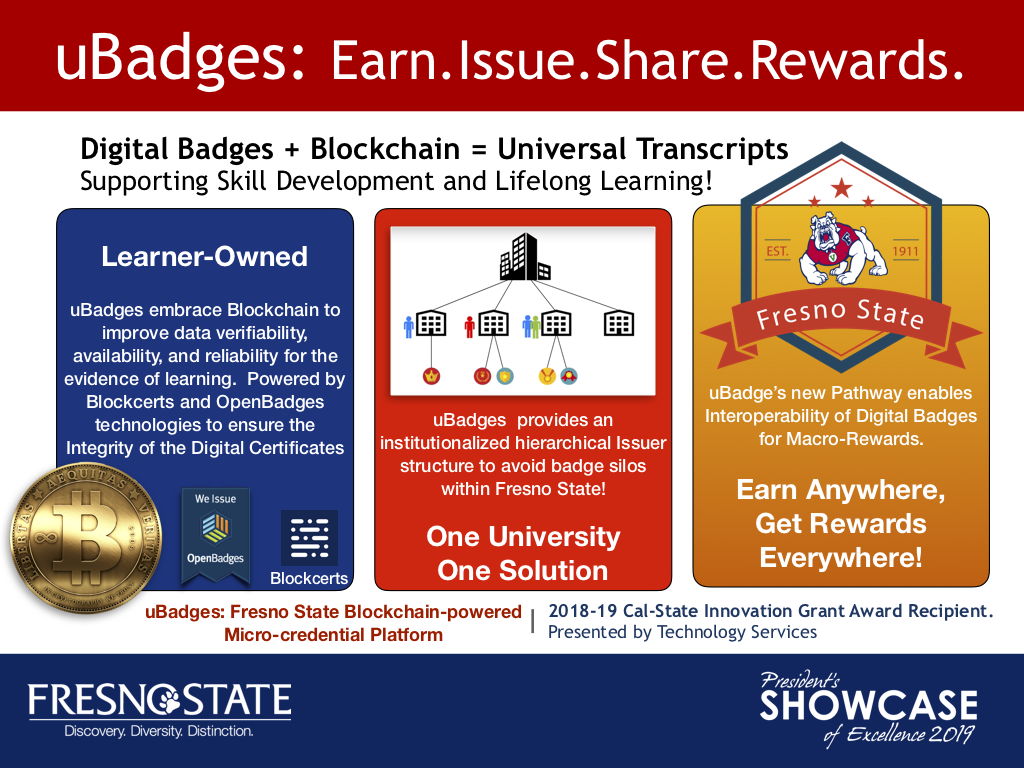
(07/2021) AI / Mobile / Student Success
In Spring 2020 universities across the nation pivoted to virtual learning due to the COVID-19 pandemic. Almost 2 years later, we begin the transition back to in-person learning, understanding that our students will continue to face many unknowns. With students who started in Fall 2020 and freshmen who started in Fall 2021 having never experienced life on campus, normalcies such as locating classrooms, navigating campus resources, and participating in campus life are completely new territory. Our students will require additional support when it comes to navigating both academic and campus life, and universities will need innovative solutions to accommodate this increased amount of first-time on-campus experiences. How do we ensure students feel supported, welcome, and confident as they begin life on campus?

The Bulldog Genie’s main goal is to provide students with a resource that will not only make the transition back to on-campus learning smoother but also offer support for the rest of their time here. Providing that important and relevant information that students need anytime, anywhere to not only succeed on the first day or the first week, but to carry that success throughout their time here at Fresno State, in a way that is comfortable, convenient, and customizable. Designed and developed by students for students who understand those areas of student need and interest, the Genie will continue to grow and evolve to fit our diverse student population. This campus-wide collaborative initiative brings together different organizations and departments on campus to create a tool that provides a meaningful digital campus experience for ALL students.
![]()
The Hub of Digital Transformation and Innovation has partnered with Fresno State’s Associated Student Inc. to present our campus community with the Bulldog Genie. What is the Bulldog Genie? The Genie is an artificial intelligence-powered and personalized digital experience designed to engage and guide students through study and campus life at Fresno State. This untethered mobile experience will give new students 24/7 access to interactive campus navigation, a virtual digital companion, event notifications, and campus engagement resources, all to help support students’ success while attending college.

(06/2017) CSU Innovation Minigrant 17-18
The Student Life Cycle in higher education starts at pre-enrollment carries through to learning experiences and student engagement and then ends with graduation and post-graduation success. Keeping students engaged and informed throughout the entirety of this cycle can be a challenge and often leads to increased dissatisfaction and decreased retention. A mobile-first approach to student engagement and information distribution provides students with the flexibility and accessibility they need to navigate life on campus without suffering from information overload.
The Hub of Digital Transformation and Innovation’s proposed solution, The Mobile Student Intranet, is designed to deliver mobile-first engagement across the Student Life Cycle. With a Student Experience-Based Dynamic Content Strategy, students stay informed anytime, anywhere via the device of their choice. This solution creates a hierarchy of information giving students the ability to personalize their preferences with an opt-in/opt-out system. The proposed framework is designed to distribute digital information relevant to students. Based on the Core Information Object Model, a rule-based engine (AI) is designed to facilitate persona-based, individualized information.
Effective communication is an integral part of The Student Life Cycle, and ensuring that students are engaged and empowered throughout the process requires innovative solutions. Students live in a mobile era and more information and services for students are becoming available via mobile devices and wearable tech. This project provides an opportunity to restructure the communication process and allowed the project team to define a new innovative architectural framework for both Technology and User Experience.
AWS IOT ENTERPRISE BUTTONS
(01/2017) Smart Campus
What is the Internet of Things (IoT)?
IoT is the inter-networking of physical devices (also referred to as ‘connected devices’ or ‘smart devices) embedded with electronics, software, sensors, actuators, and network connectivity with the purpose of collecting and exchanging data. With IoT present on most college and university campuses in the form of security cameras, temperature controls, and access to buildings, lights, power, etc., how can increased connectivity provide new modes of operation? What about the potential benefits of using this technology to enhance teaching and learning experiences?


Technology Services Innovation Team launched the AWS Pilot Project in early 2017 to explore the potential benefits of increased connectivity on Fresno State’s Campus. AWS IoT Button Pilots were launched across campus with functions ranging from a real-time press for support and assistance to collecting workspace analytics.
- DISCOVERe Hub: AWS IoT Buttons seek to enhance the current notification system of
DISCOVERe Guides On-the-Go Support service to streamline request notification, tracking
(visibility & accessibility), and management.
- Pay for Print: Allow patrons to press for immediate help via the IoT ‘Support” Buttons
attached to the Fresno State Pay-for-Print workstation and printers.
- Workspace Climate: With the placement of TWO IoT Buttons (one labeled Happy the other
labeled Sad) in the most visible and accessible spots in the office workspace climate
can be assessed and analyzed.
- Workspace Climate: With the placement of TWO IoT Buttons (one labeled Happy the other
labeled Sad) in the most visible and accessible spots in the office workspace climate
can be assessed and analyzed.
- Auxiliary Awareness Buttons: IoT Buttons used for secondary emergency notifications, security alerts, and assistance needed awareness.
